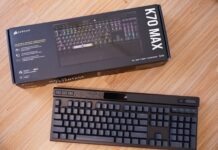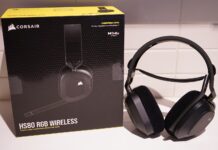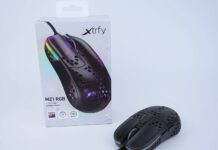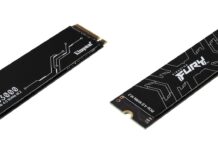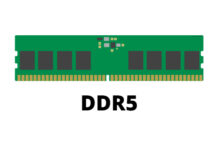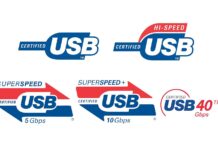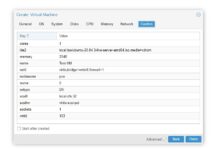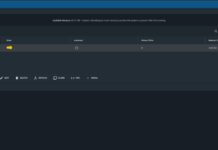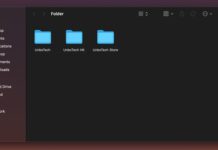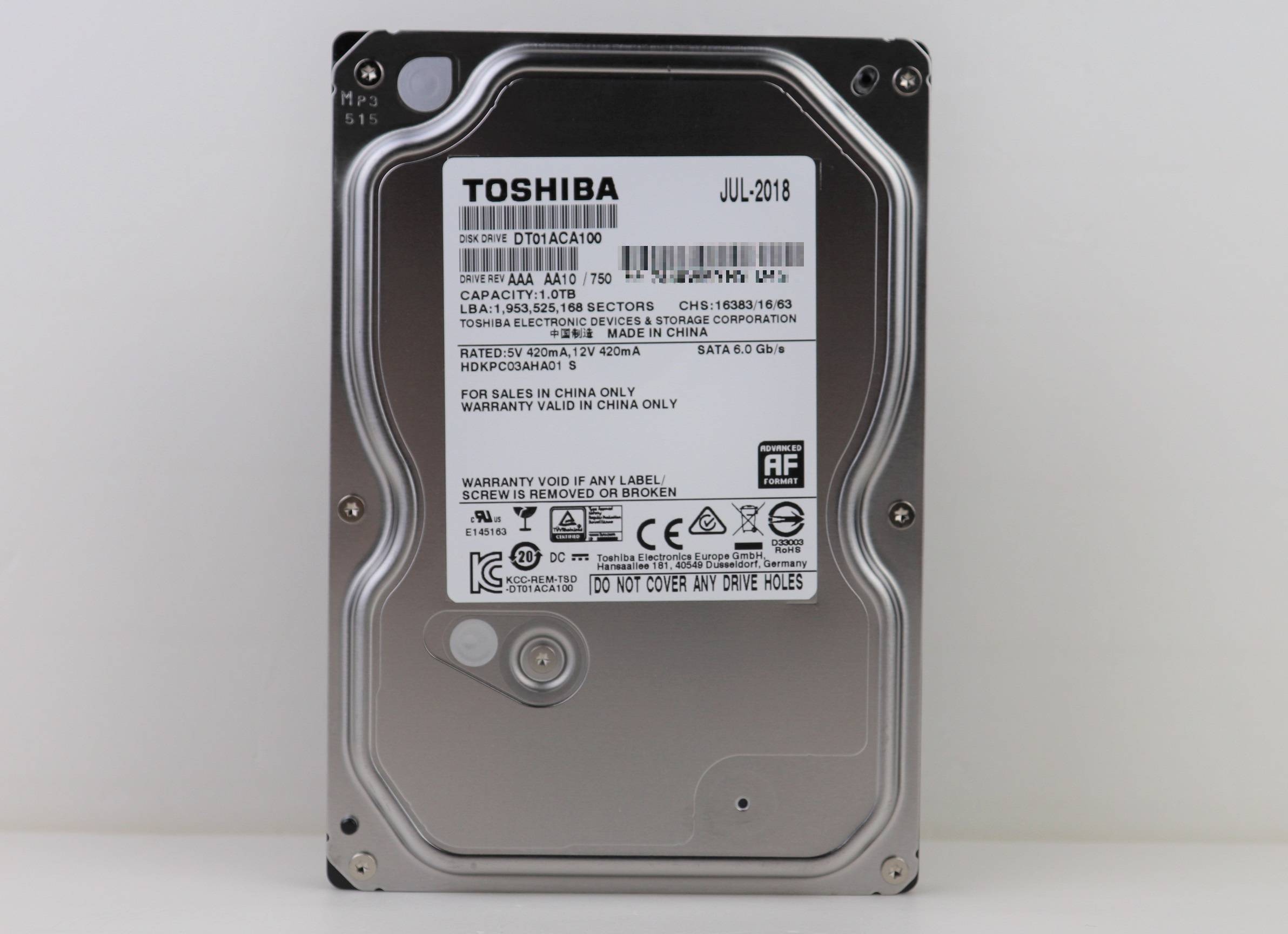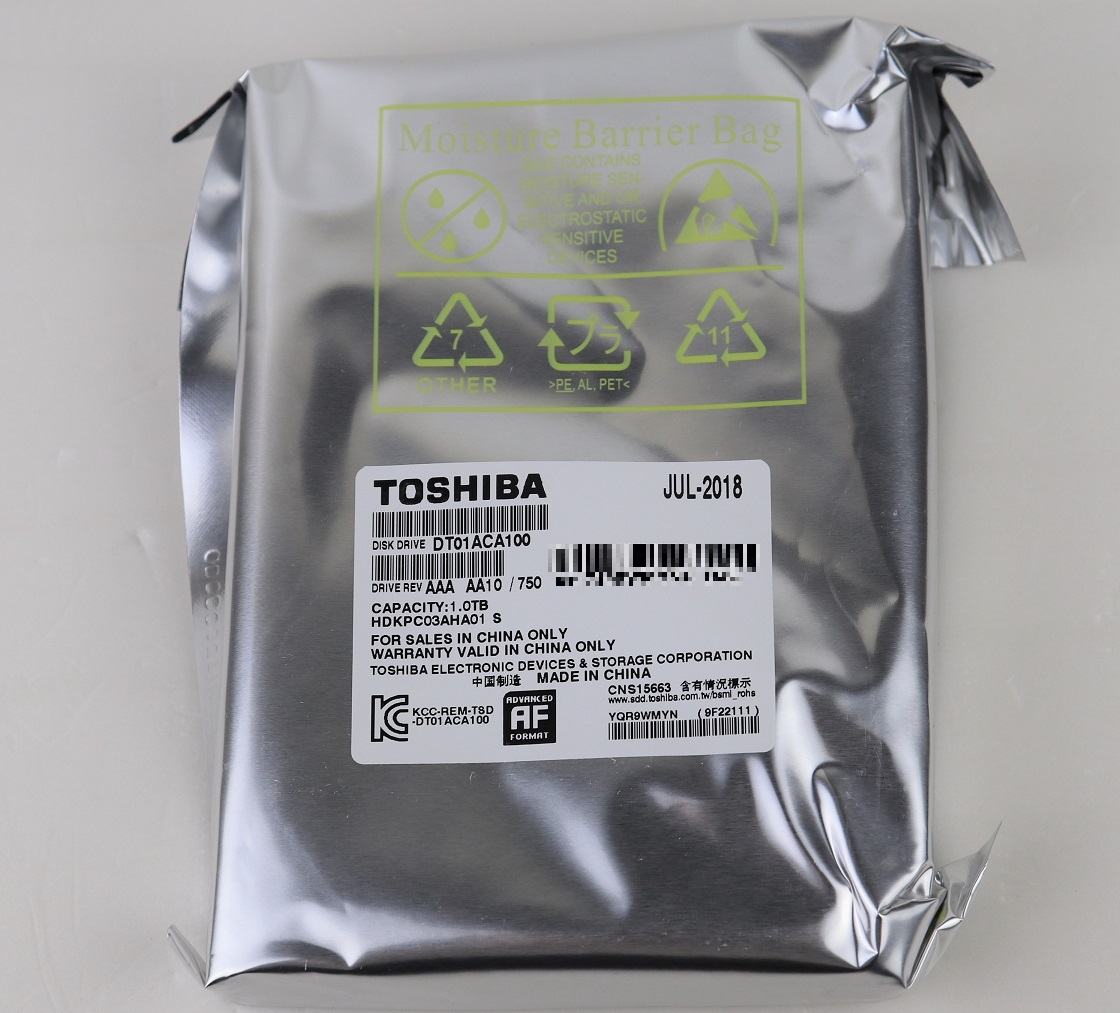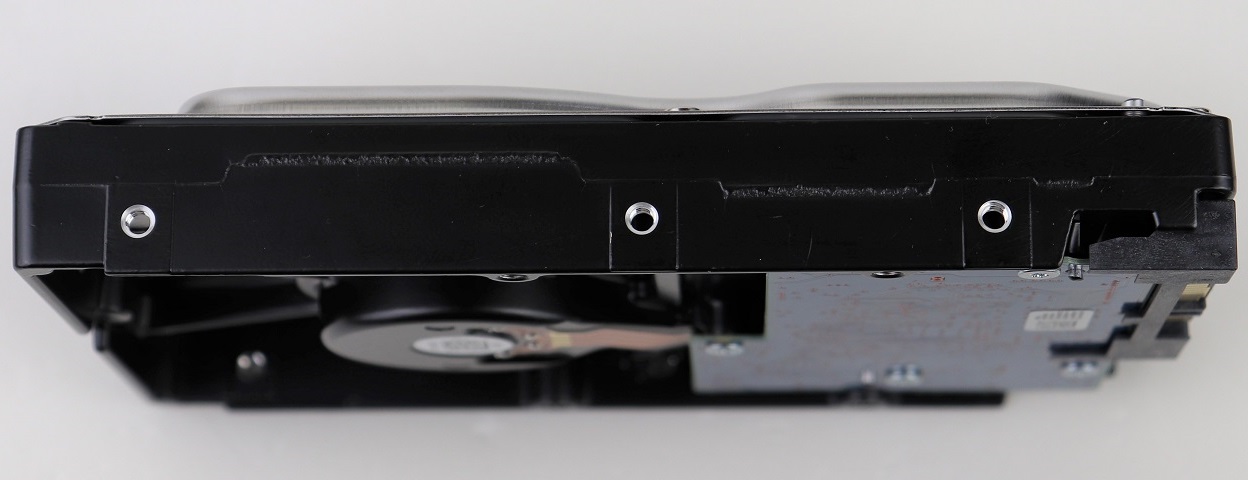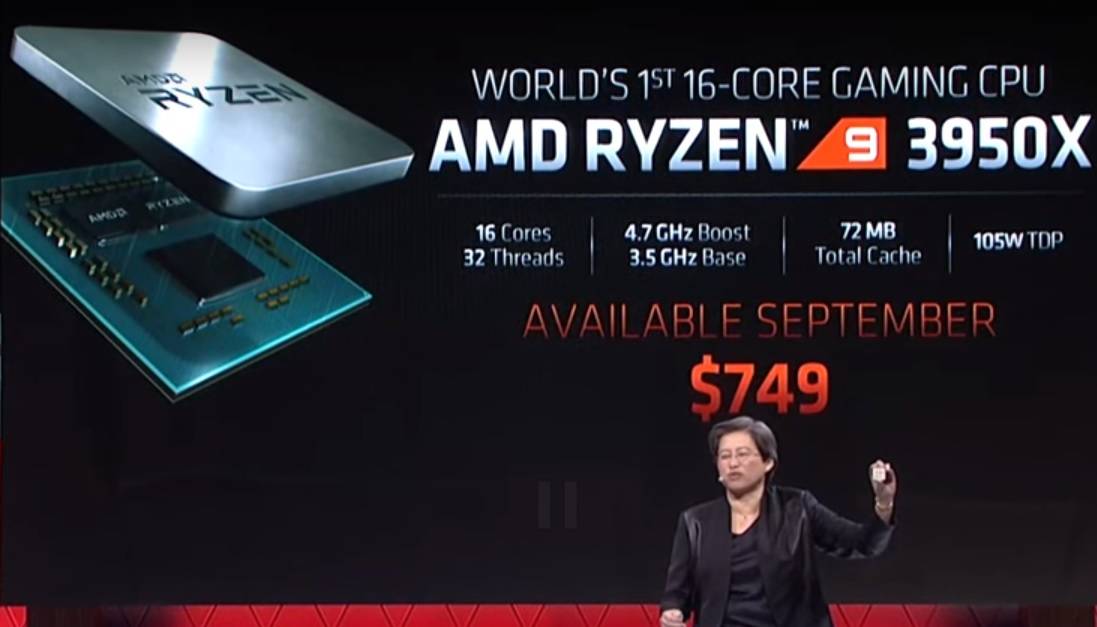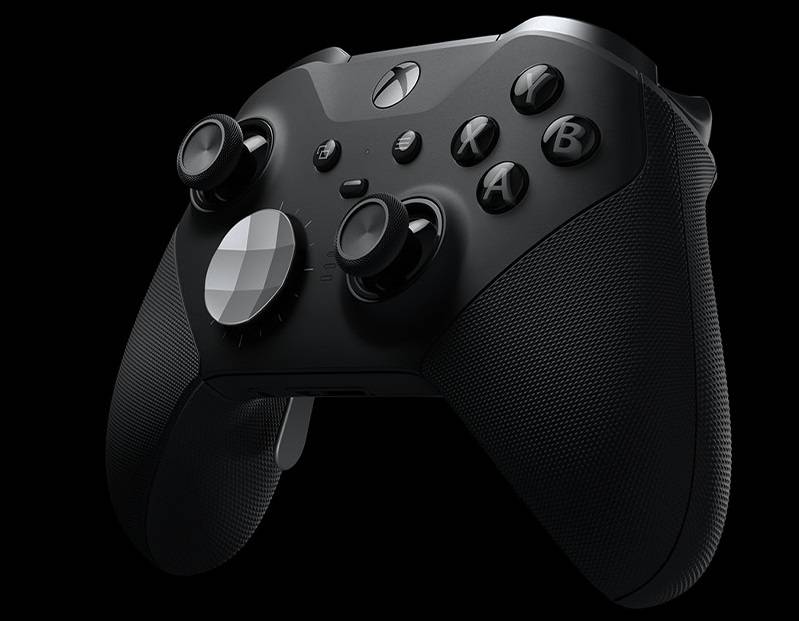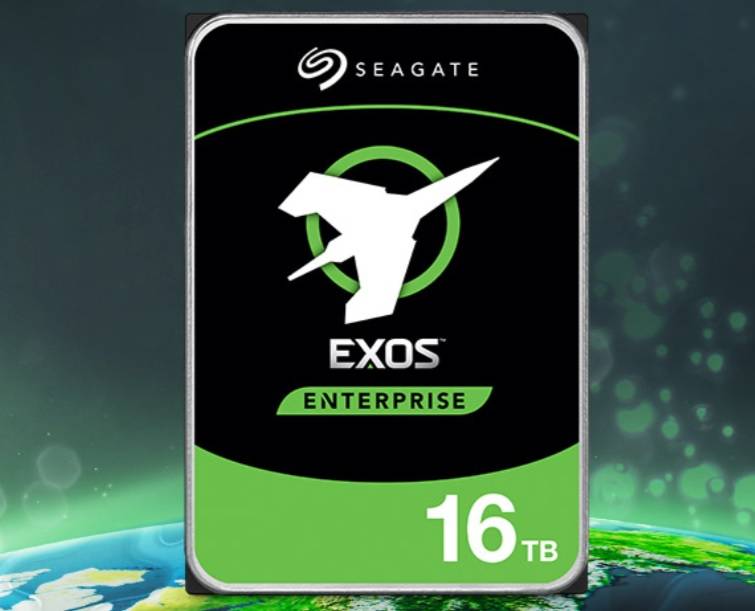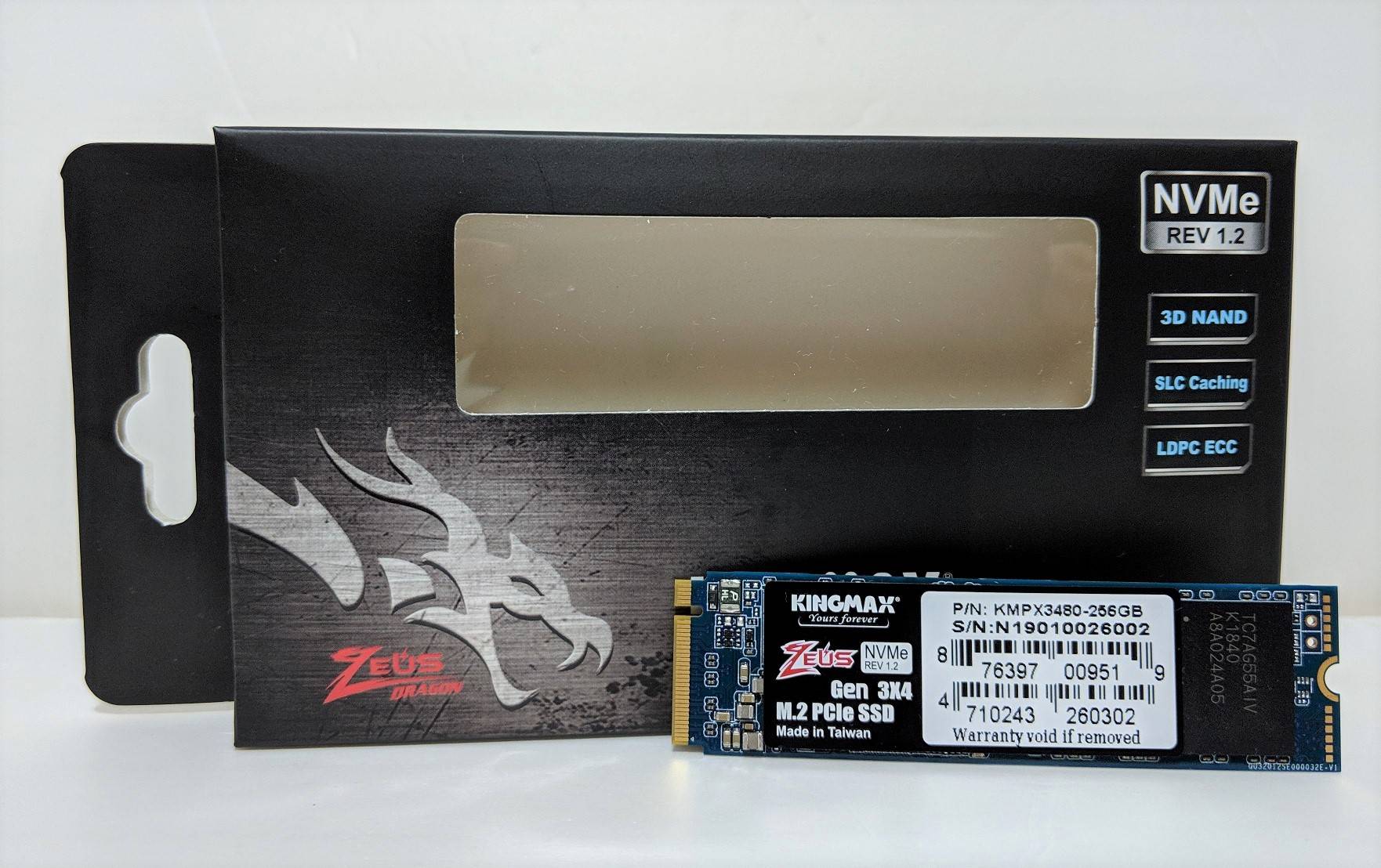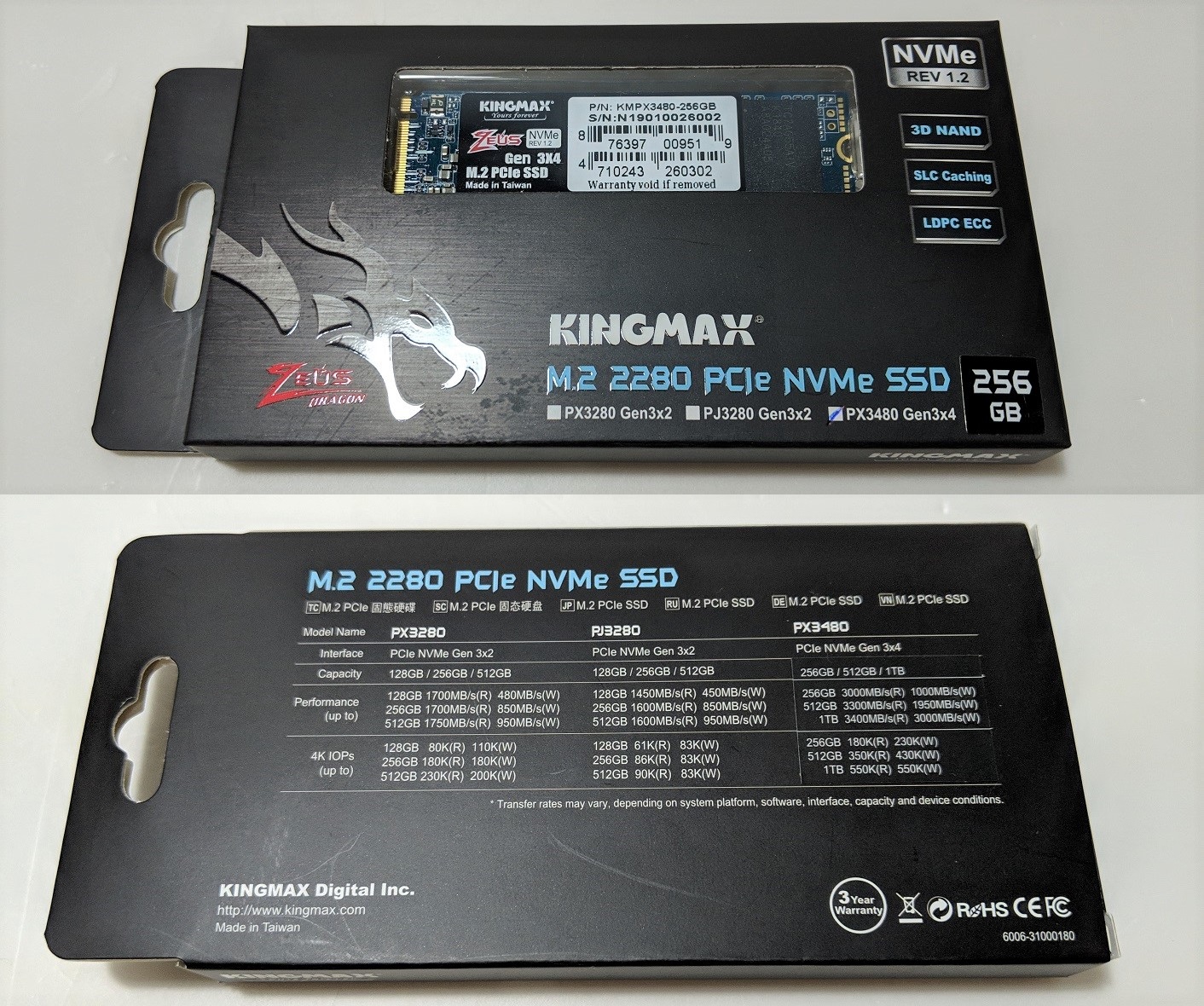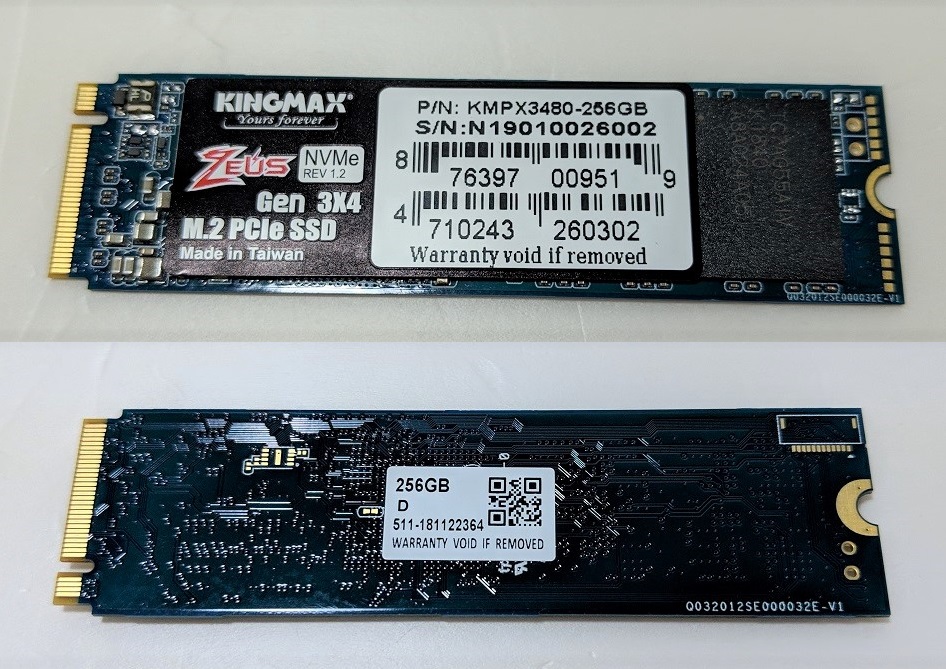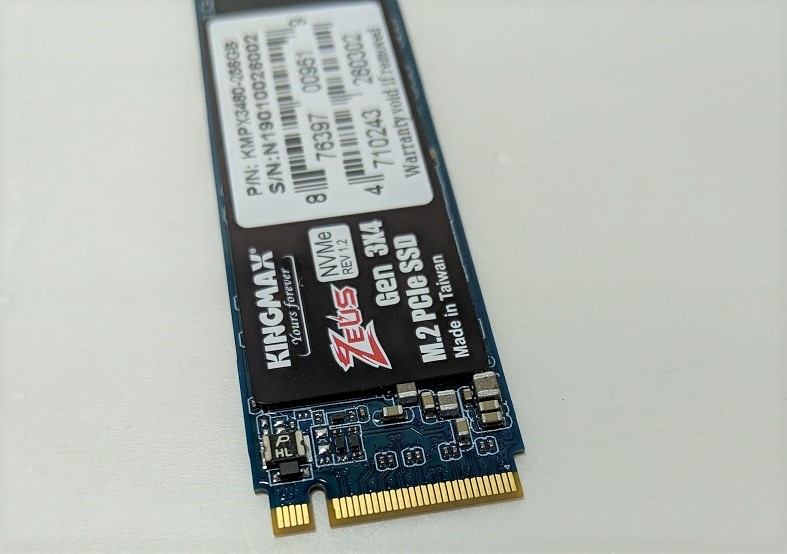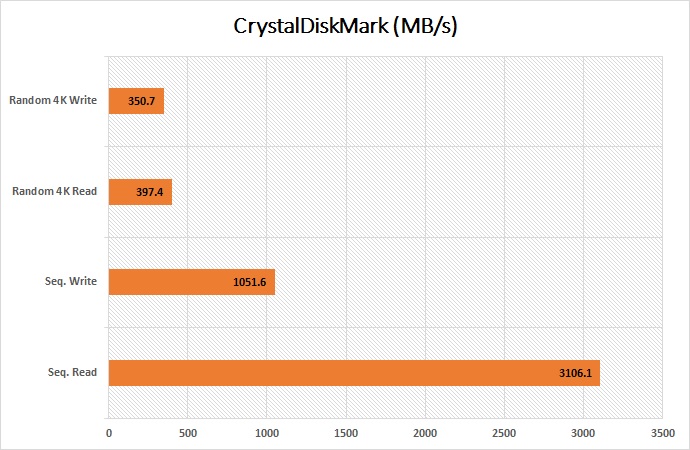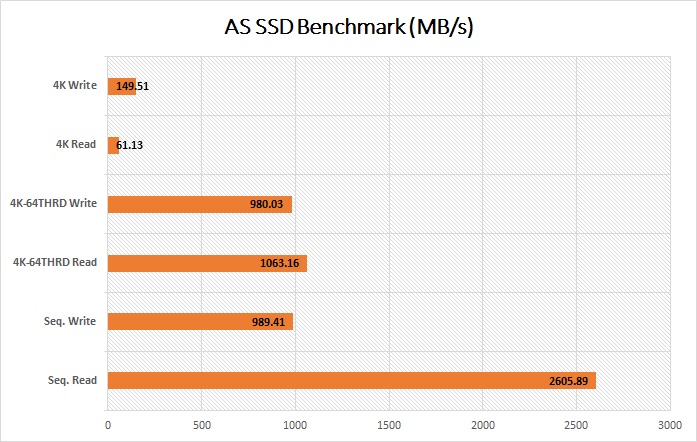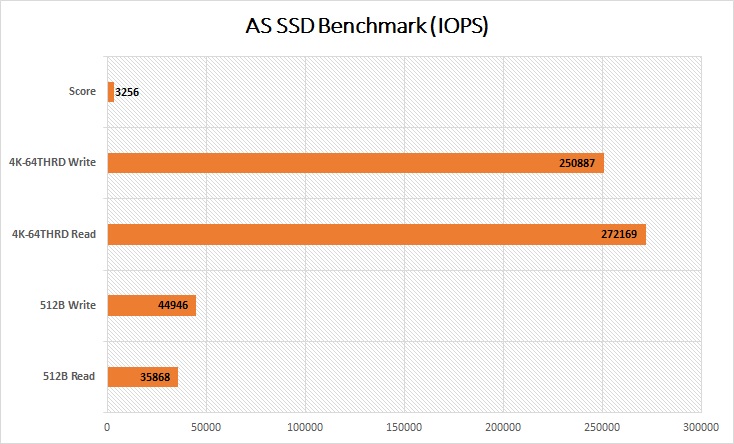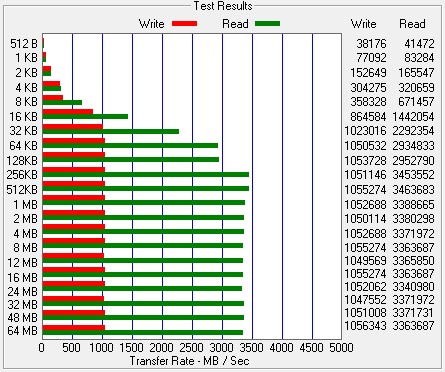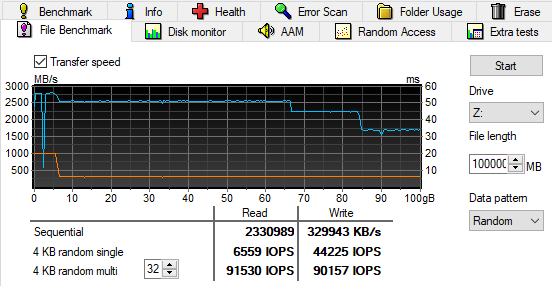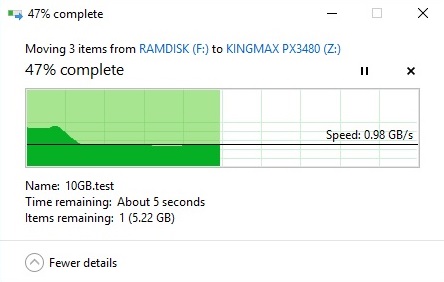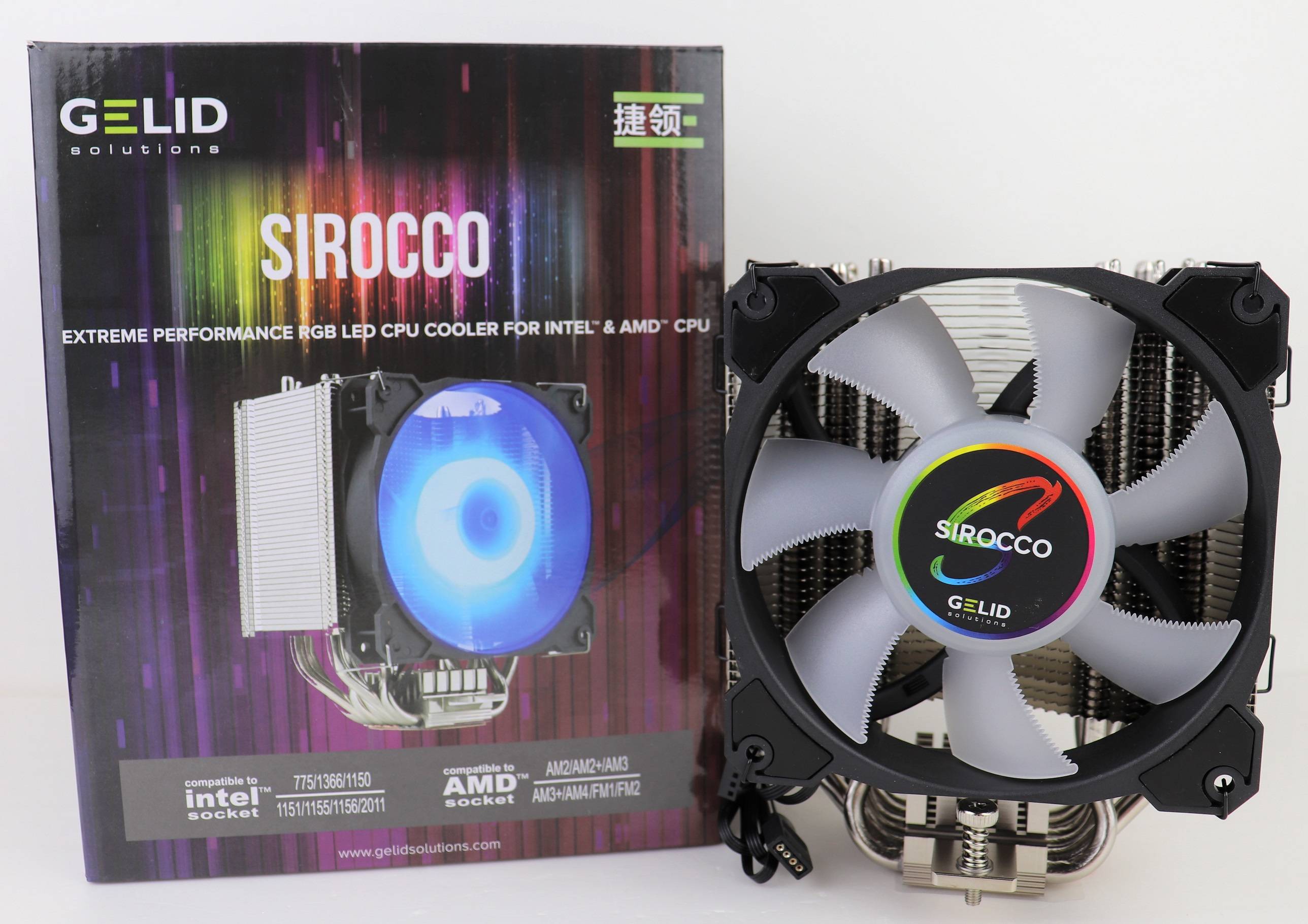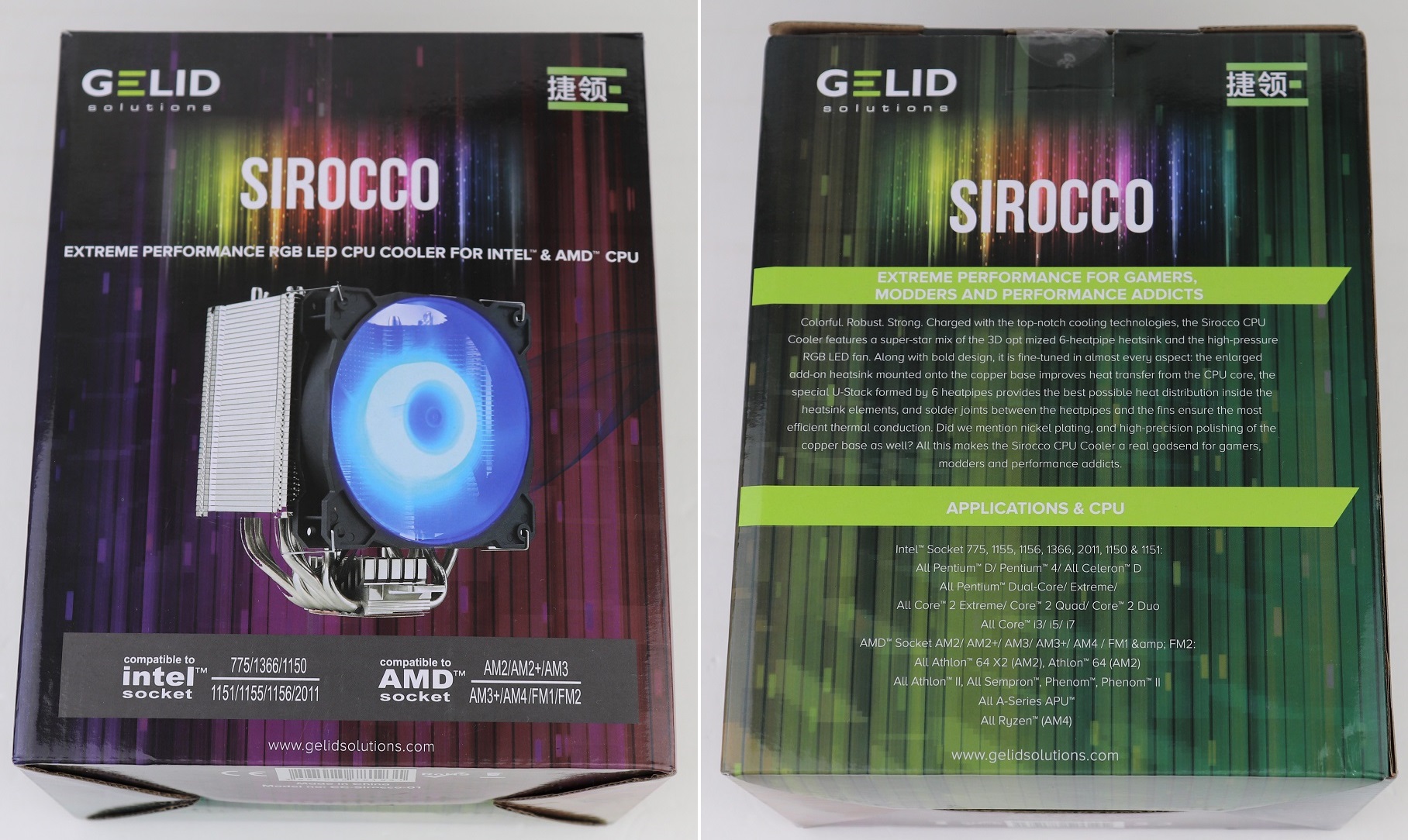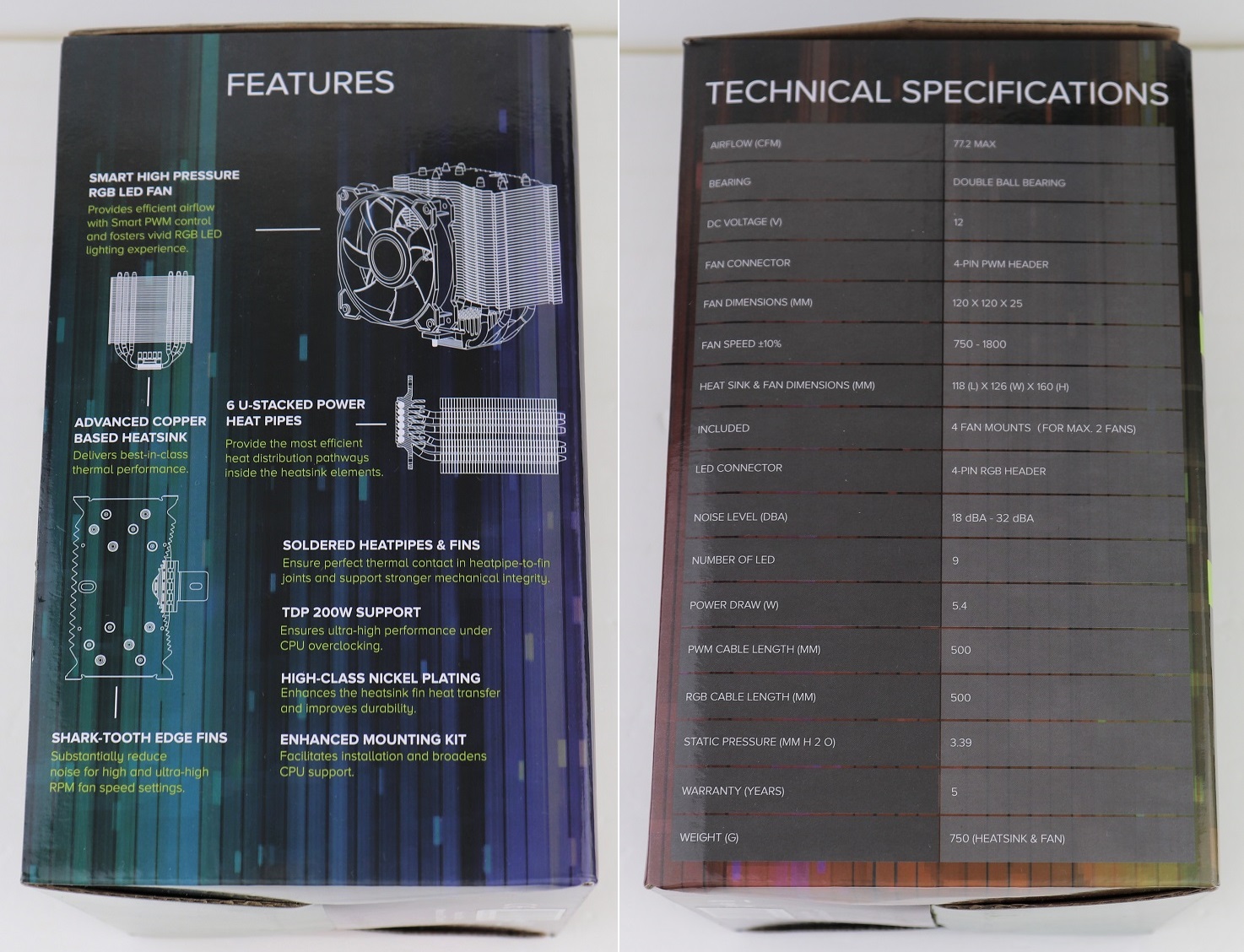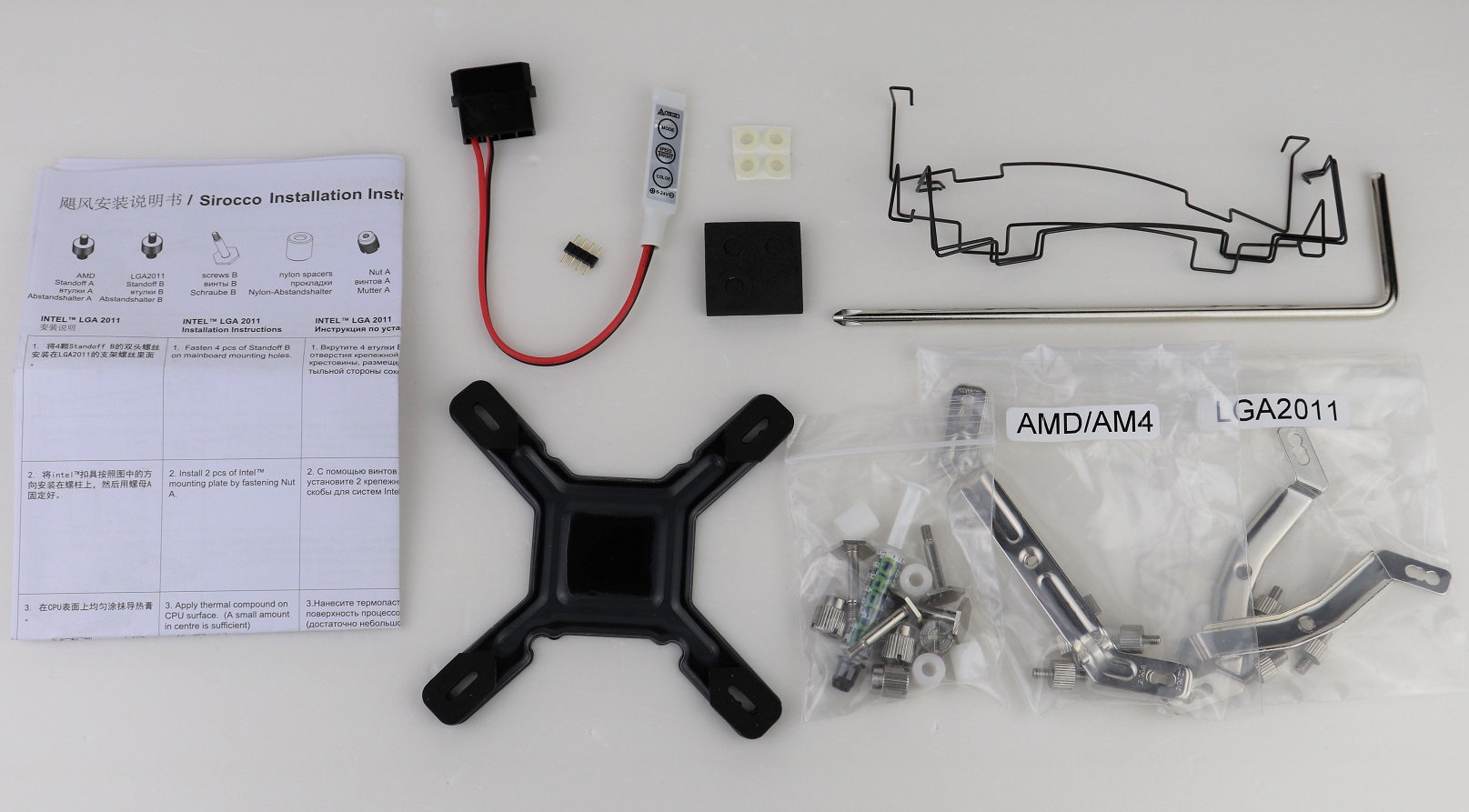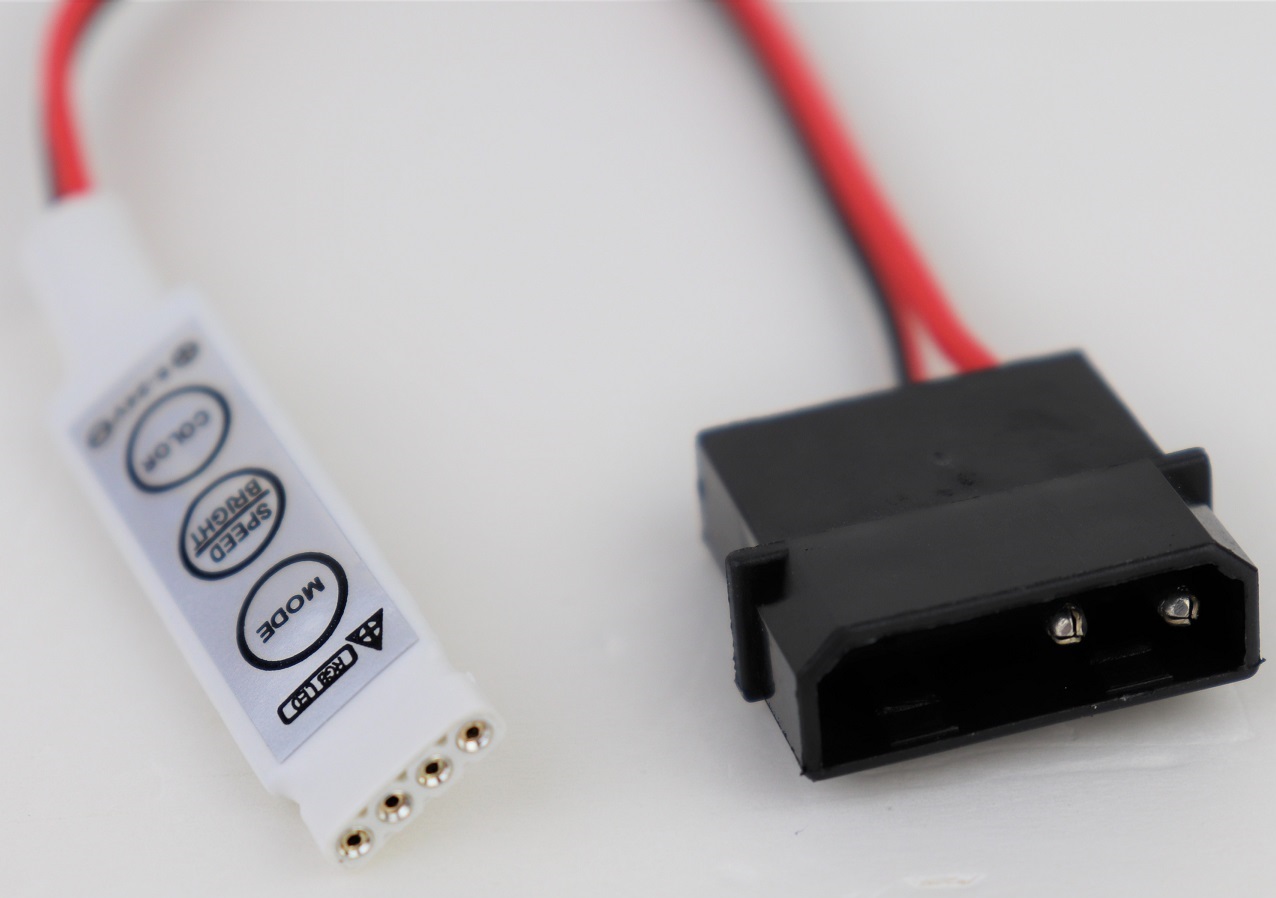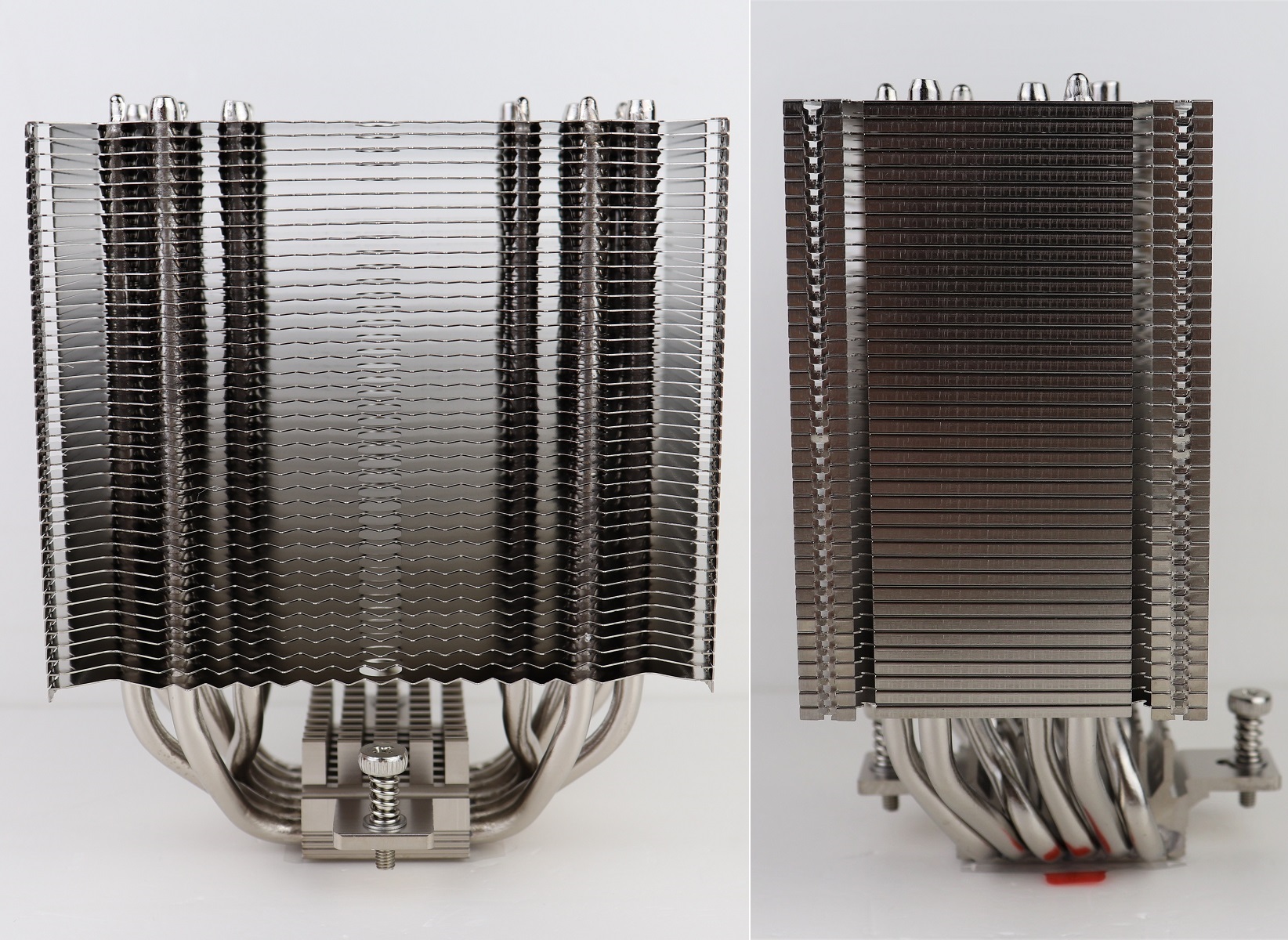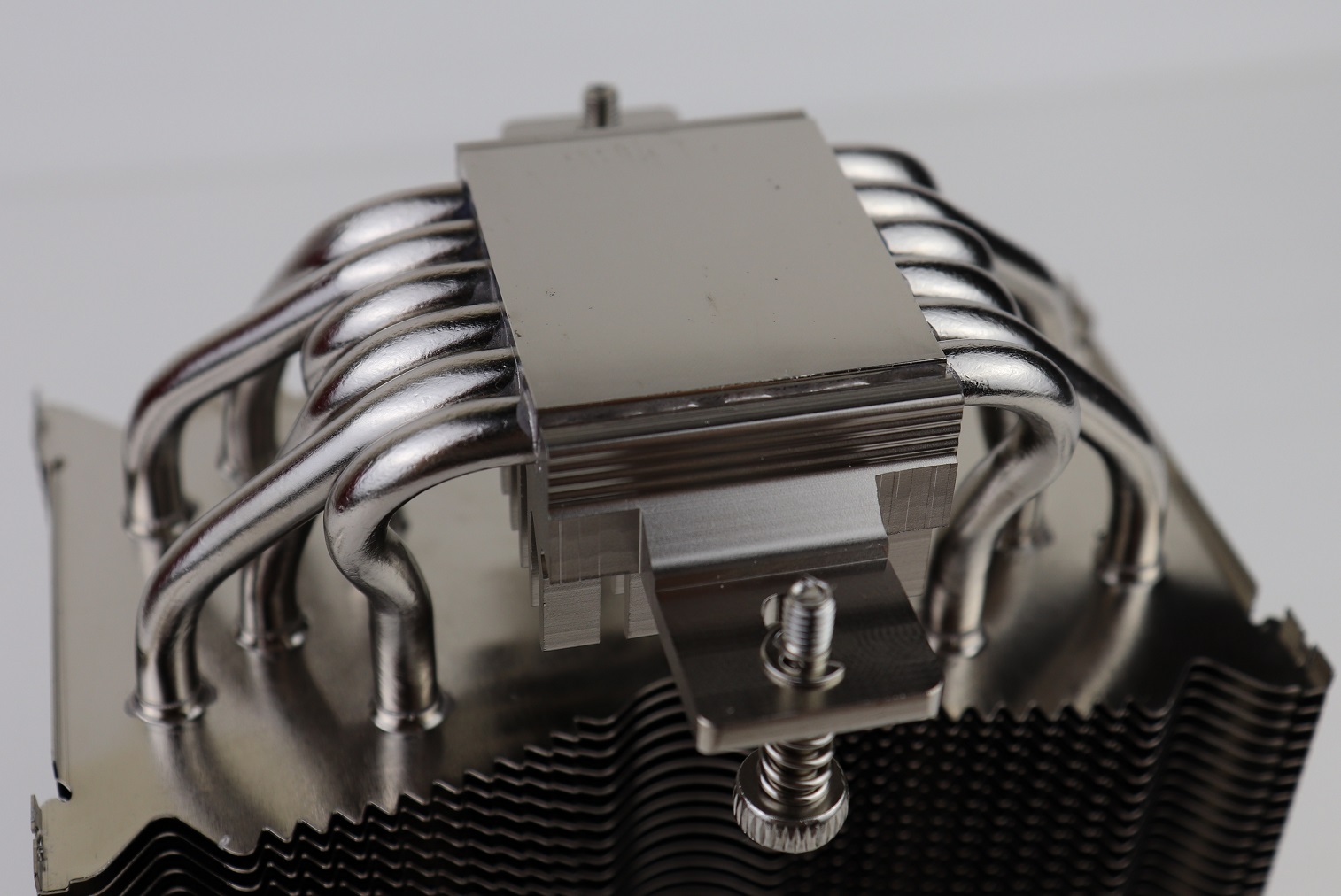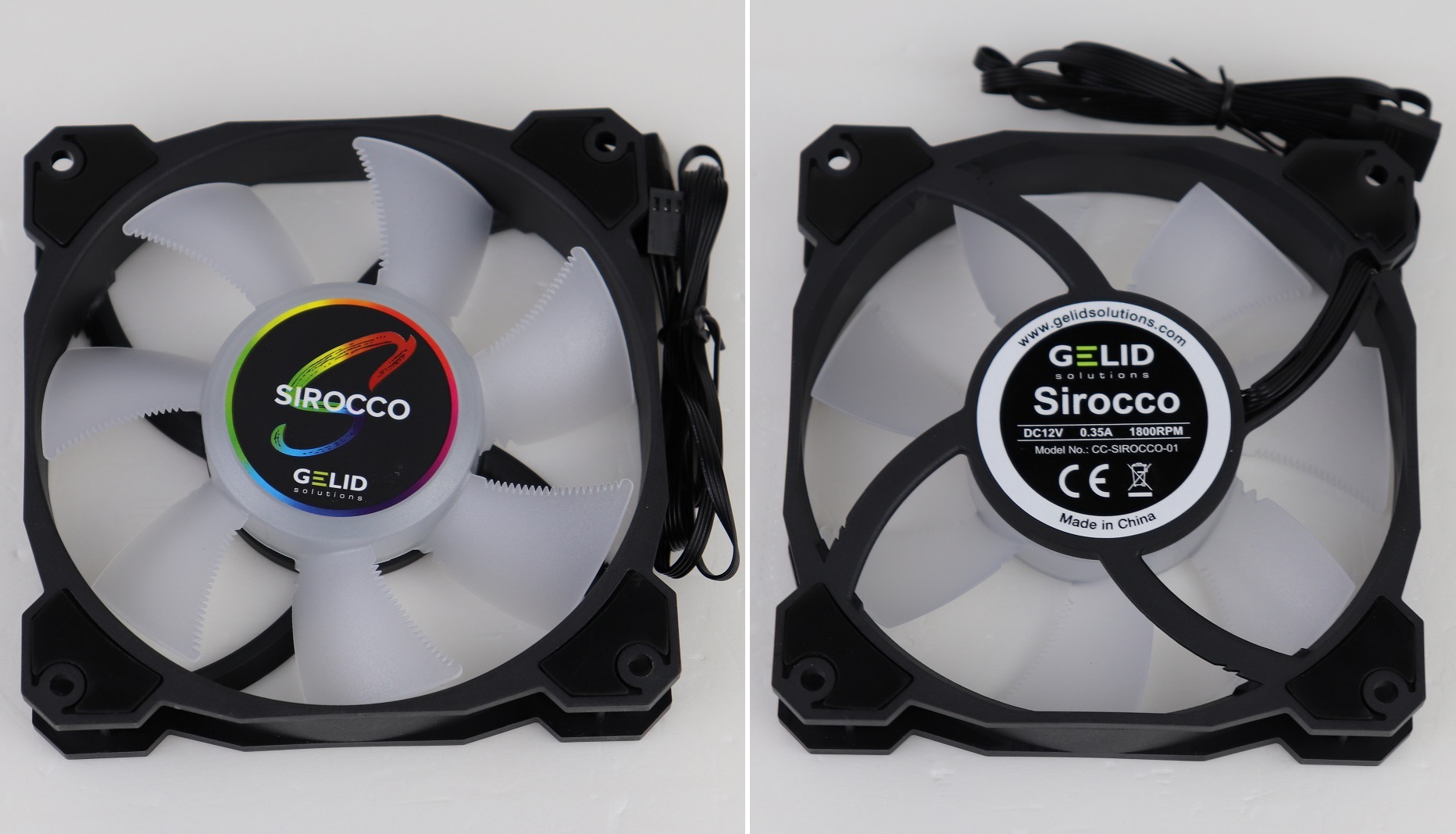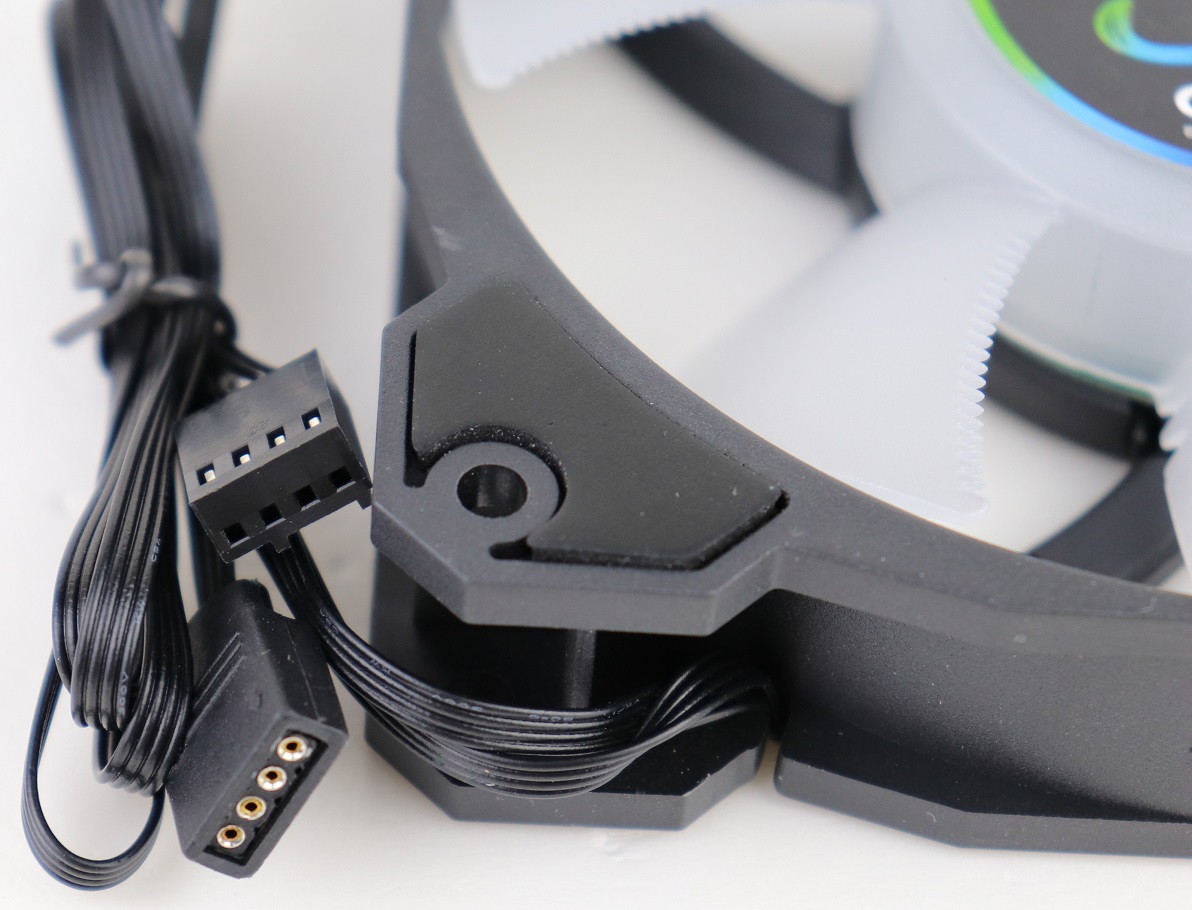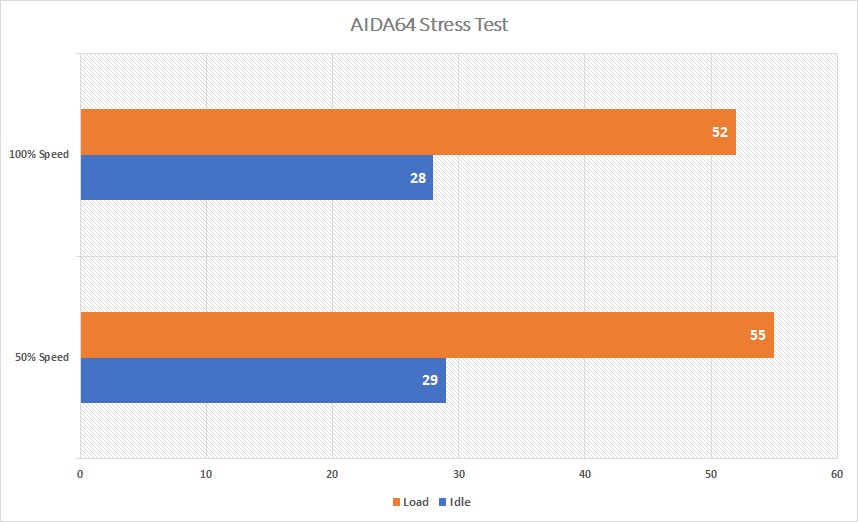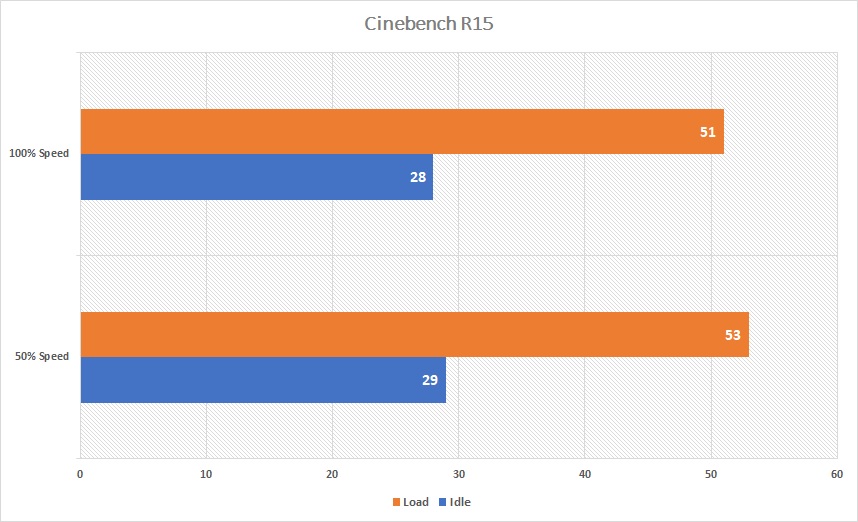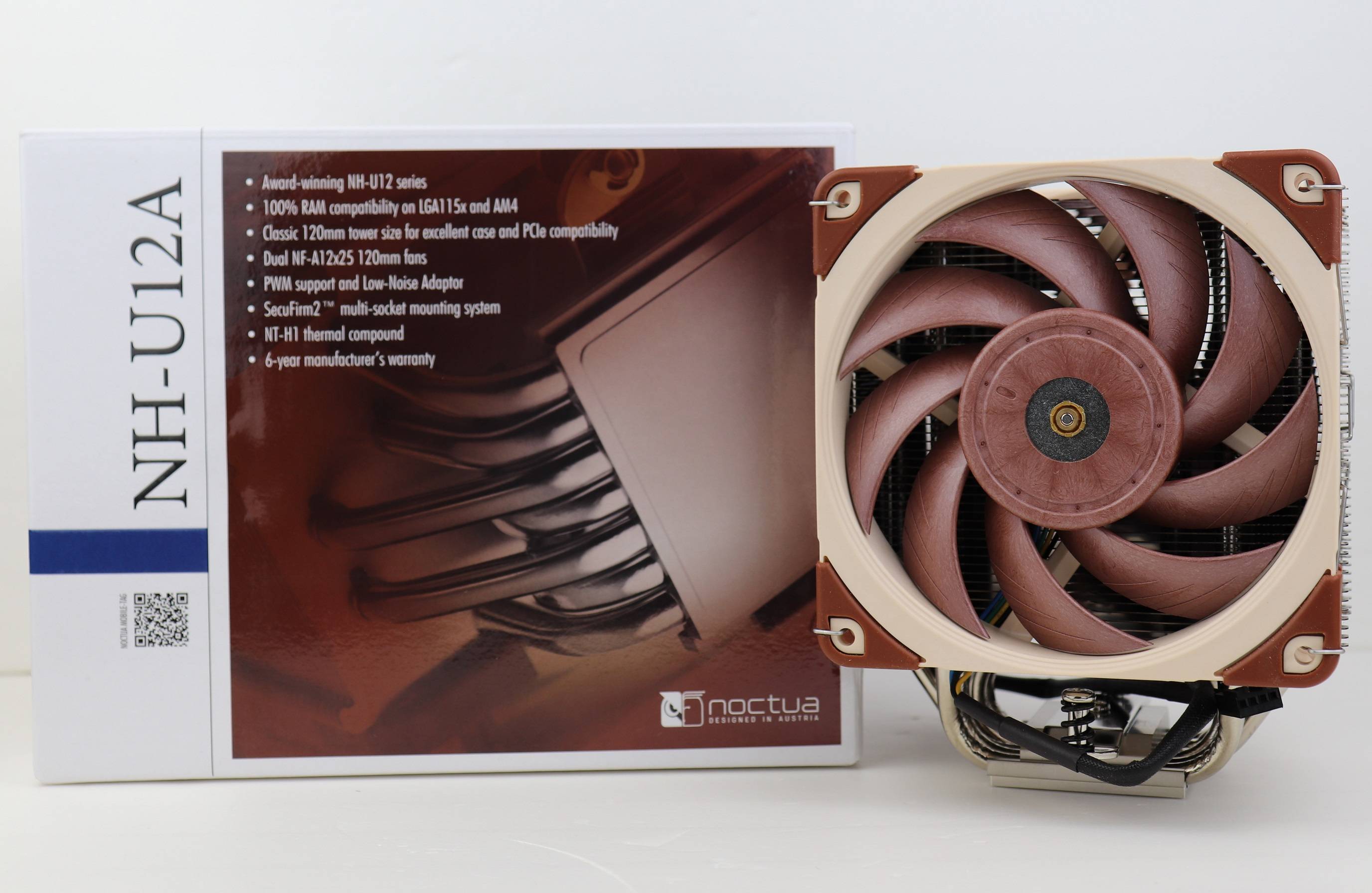
The Noctua NH-U12S (its review here) is one of the most reputable single-tower CPU cooler in the market. In March, Noctua released the latest generation in the NH-U12 family, named NH-U12A. It is claimed to offer cooling performance similar to 140 mm-sized coolers. Let’s see how well it did in our tests.
Unboxing
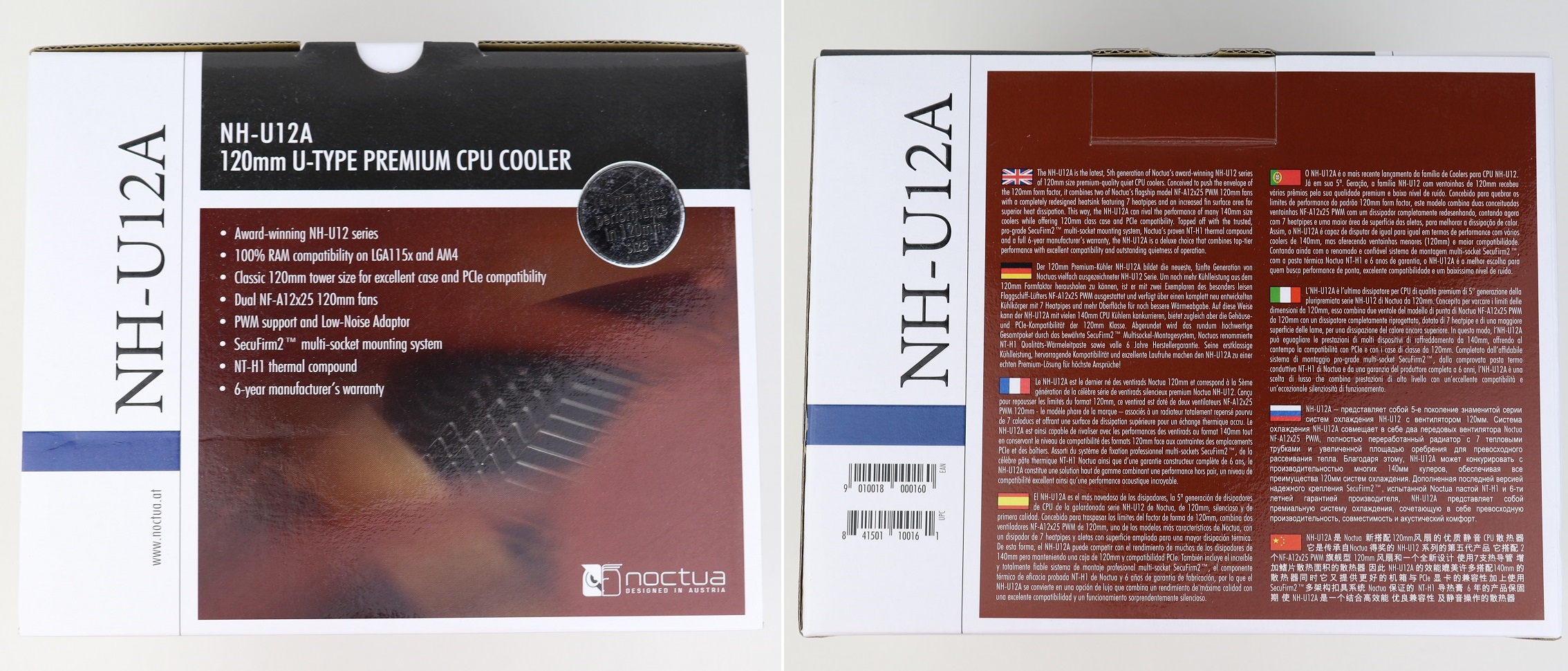
The NH-U12A has the typical Noctua cooler packaging design, with a white and brown background. At the front, the model name, “Noctua” logo and several key features of the NH-U12A are clearly printed. You get the brief description of the cooler in eight different languages at the back.
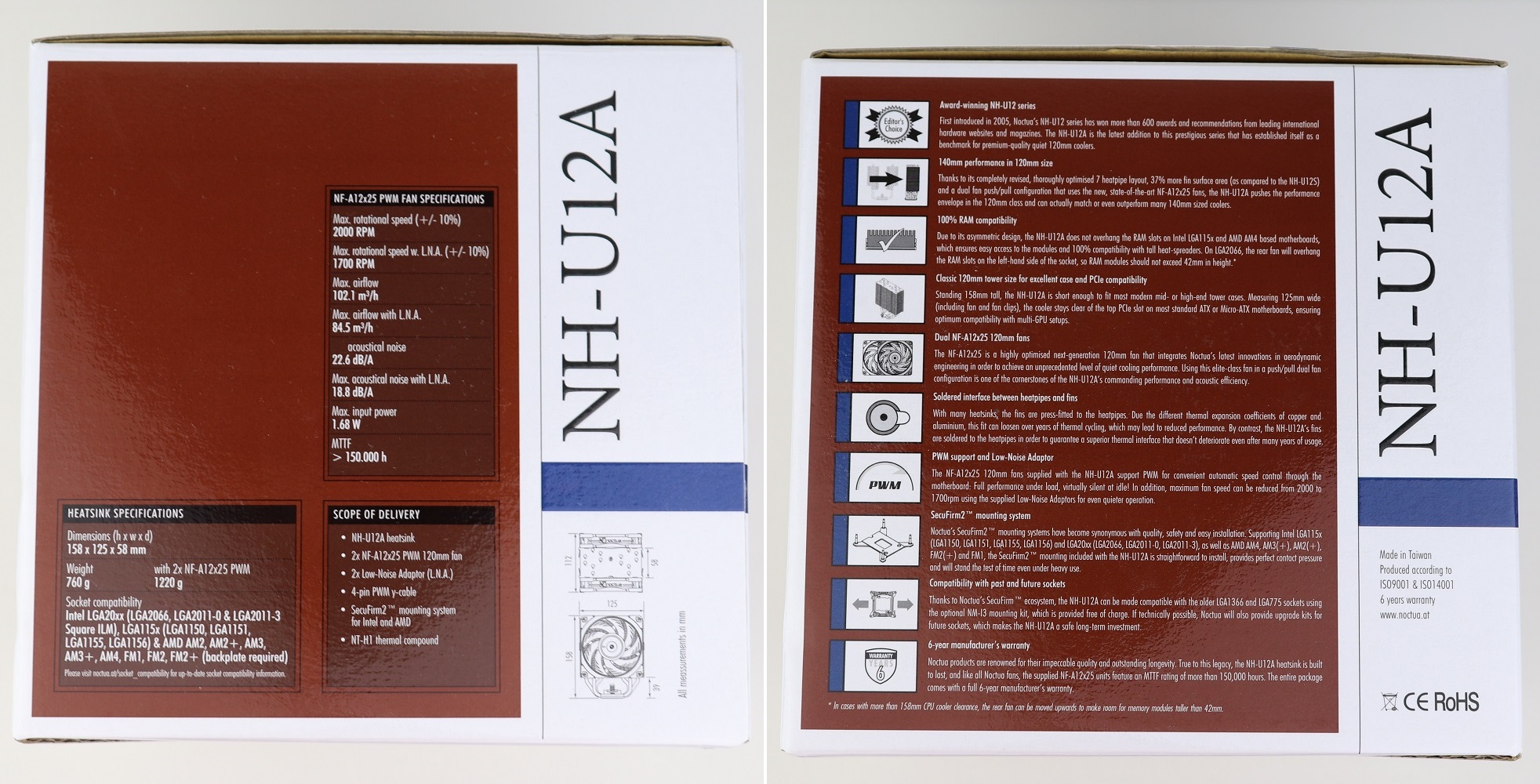
Flipping the hard cardboard box to the sides, you can see a few specifications lists for both the NH-U12A cooler and the two included NF-A12x25 fans, such as dimensions, weight, RPM ranges and airflow. More characteristics of the cooler are written on the box.
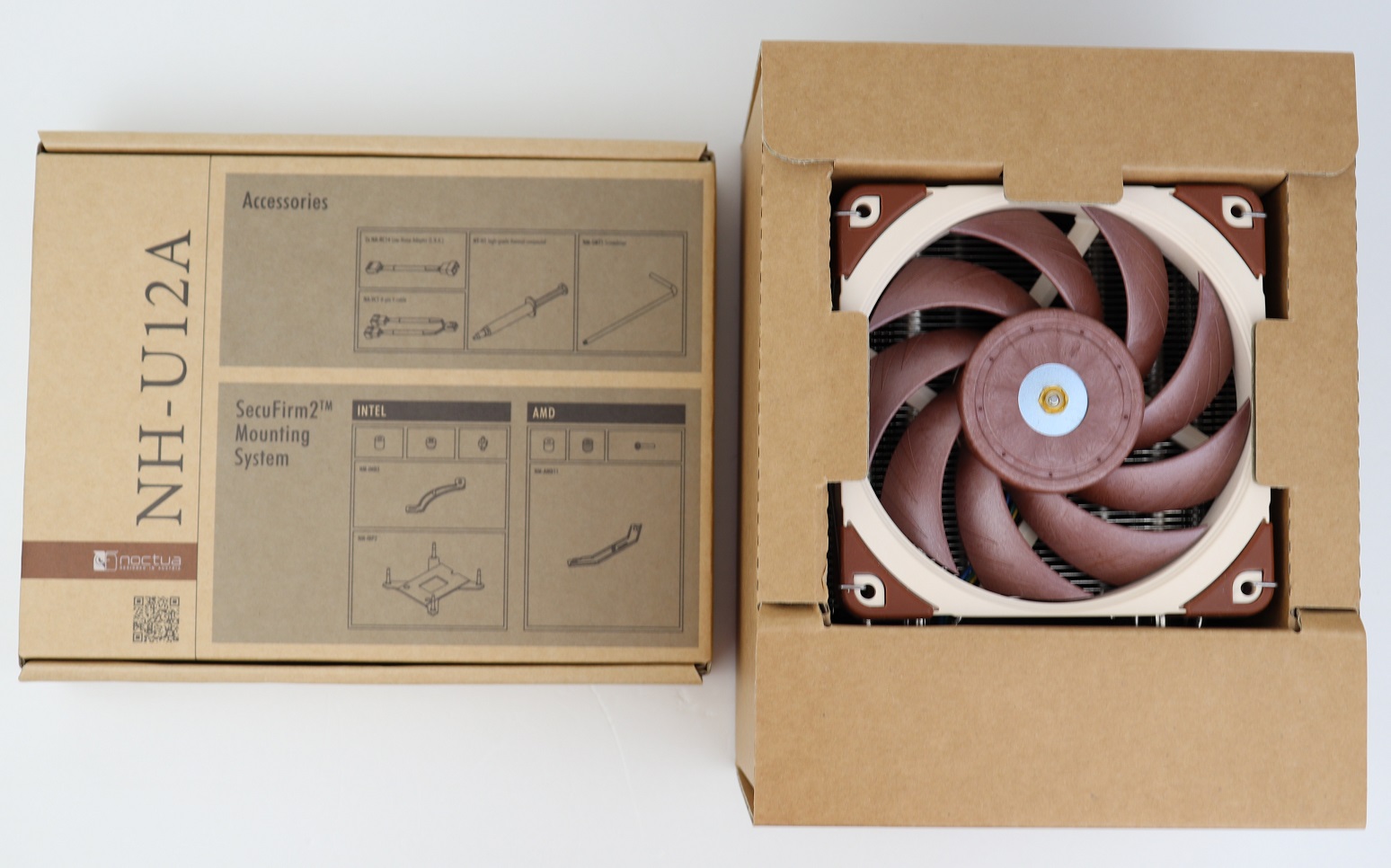
The NH-U12A cooler and the fans are securely packed using cardboard, while all the mounting hardware and accessories are neatly stored in another box.
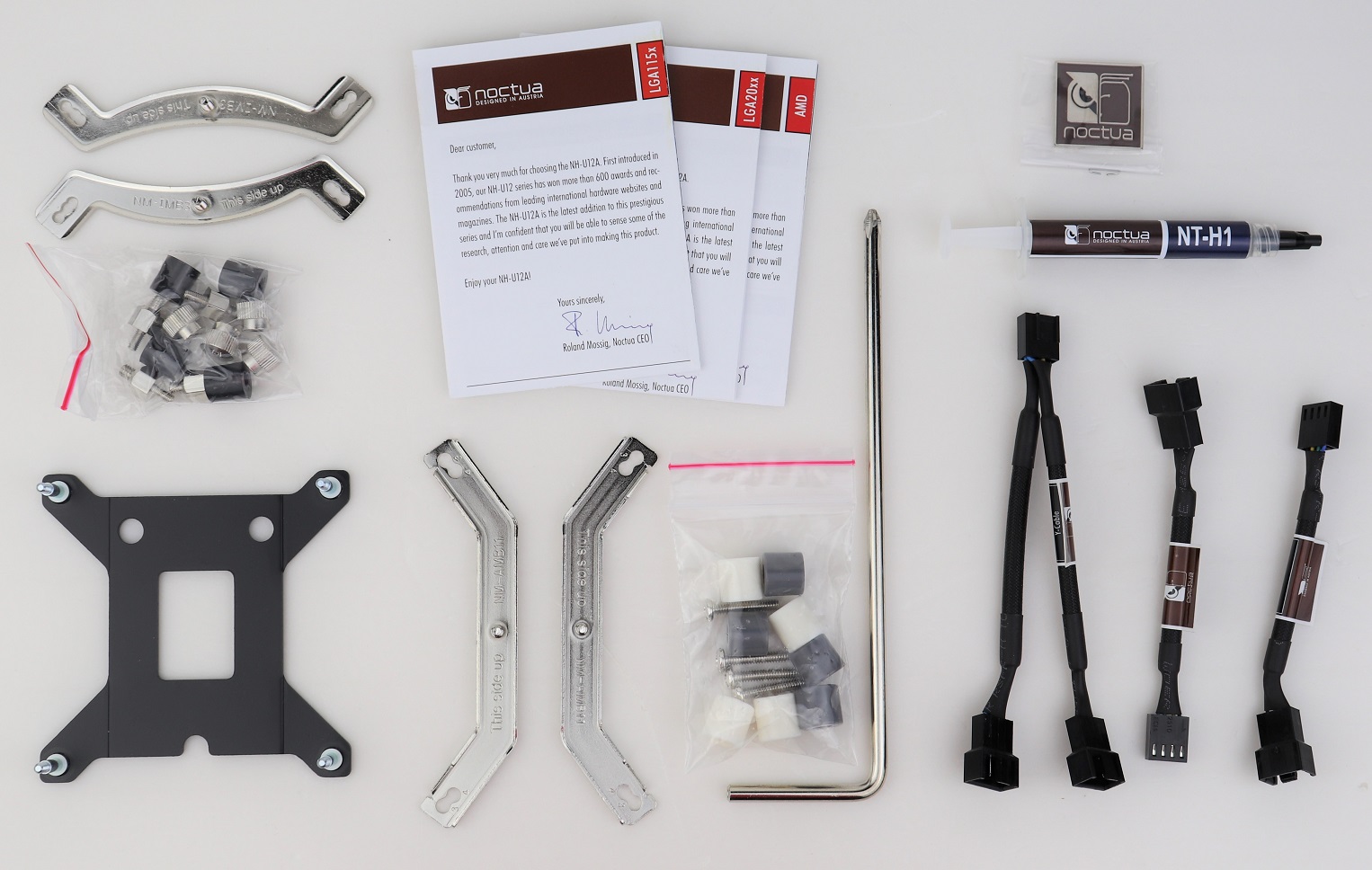
The NH-U12A uses Noctua’s notable SecuFirm 2 mounting system, which can support most modern CPU sockets from Intel and AMD. The cooler can be installed on Intel LGA 115x, LGA 2011 and LGA 2066, as well as AMD AM2 to AM4 or FM1 to FM2+ motherboards. Three separate user manuals are provided, along with a long screw driver.
Inside the packaging are a metal “Noctua” case badge, the NT-H1 thermal compound, two low-noise fan adapters and a 4-pin PWM y-cable.
Noctua NH-U12A CPU Cooler
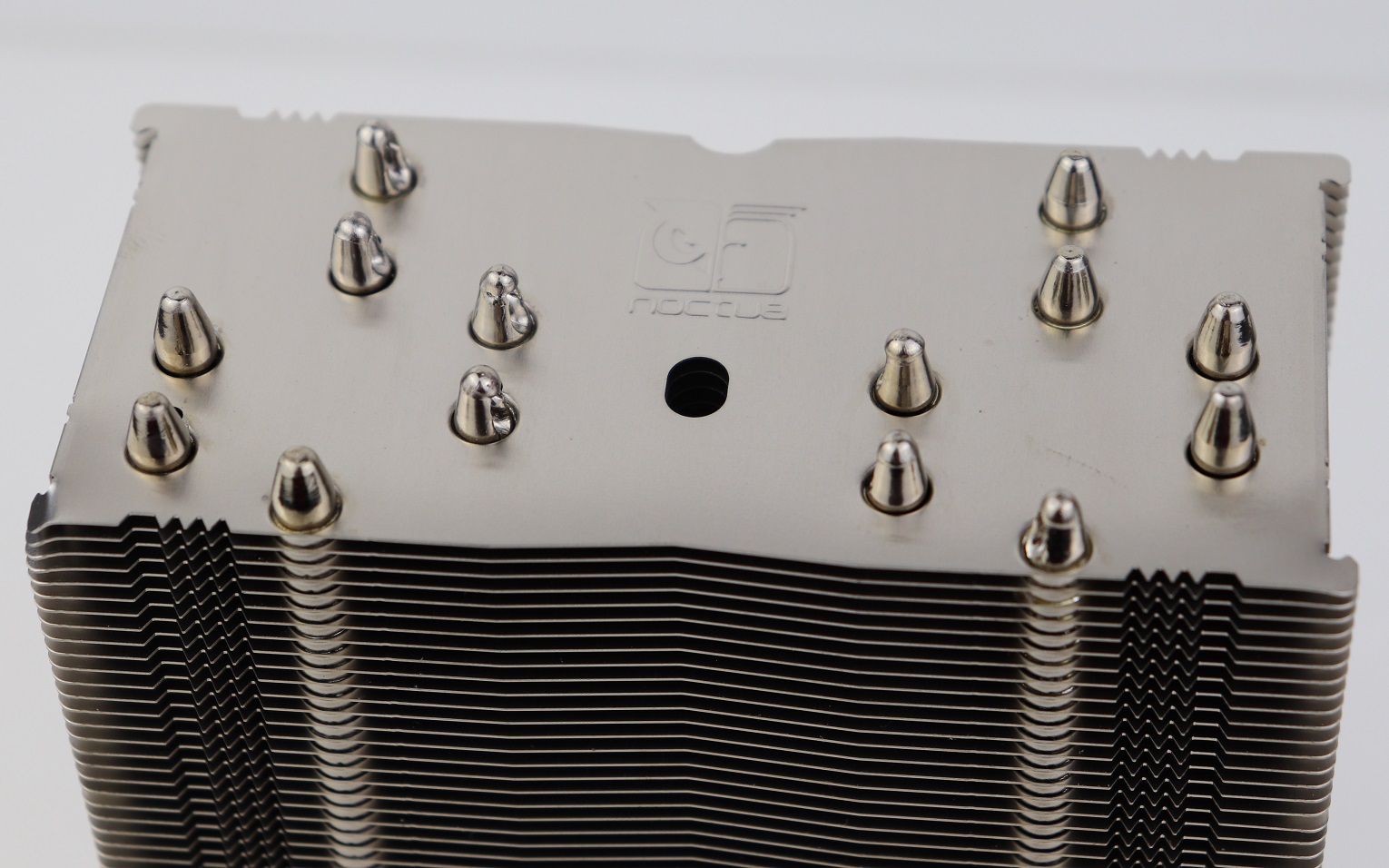
Compared to the Noctua NH-U12S (its review here), the NH-U12A’s heatsink is 13 mm deeper, but keeps the same 158 mm height and 125 mm width. The deeper heatsink fin stack is required to accommodate the seven 6 mm nickel-plated copper heatpipes, which is two more than the NH-U12S. Overall, it has 37% more fin surface area to help for heat dissipation.
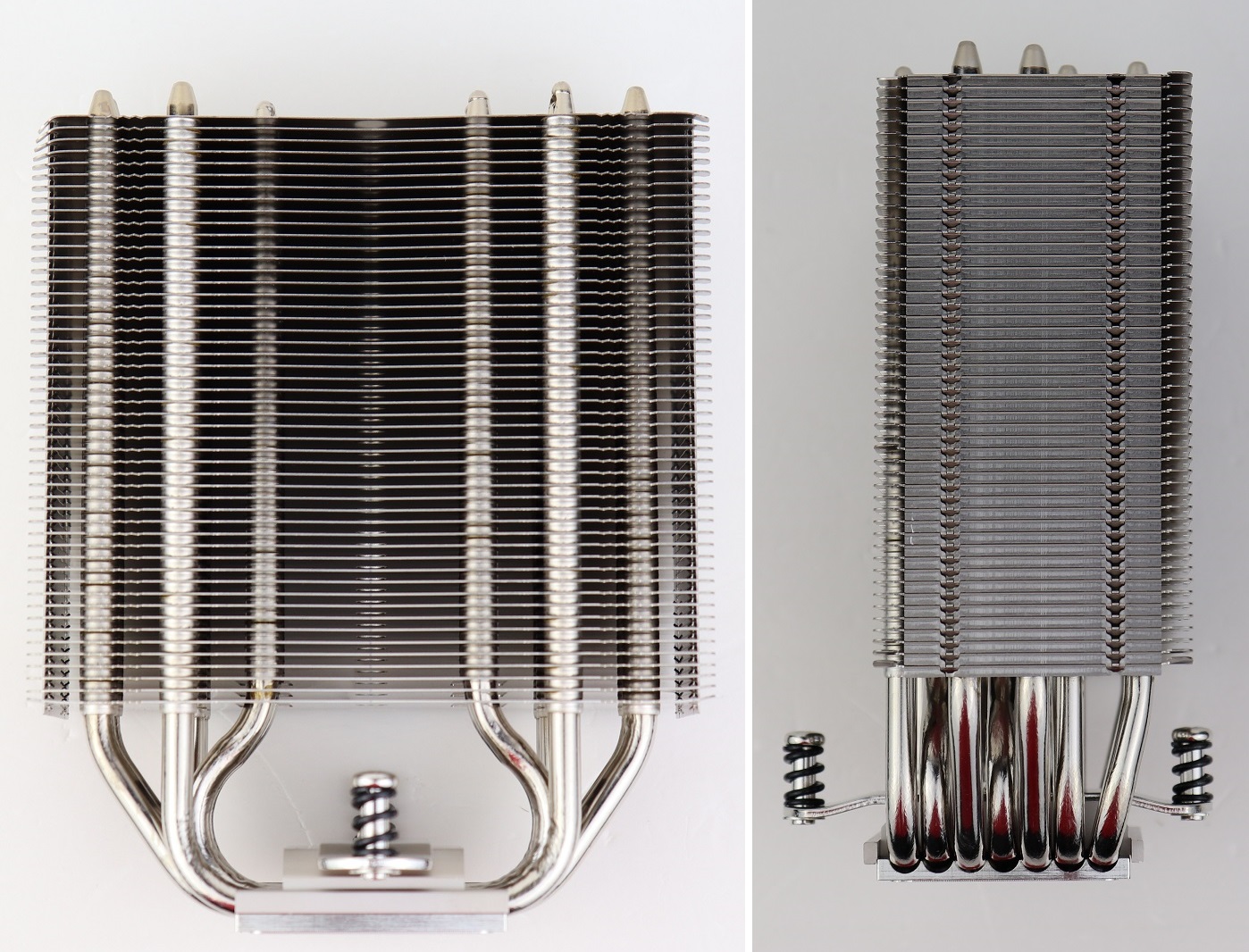
The seven heatpipes are bent in to three different U-shapes that go through the entire aluminium fin stack. They are spread evenly across the heatsink to increase efficiency of the heat transfer. Noctua also decides to solder the heatpipes to the fin stack, instead of press-fitted, which would allow the cooler to stay consistent in performance over years of thermal cycling.
The asymmetrically-designed heatsink are moved slightly towards one side to prevent interfering with tall memory modules. The Noctua NH-U12A has 100% RAM compatibility and top PCIe slot clearance.
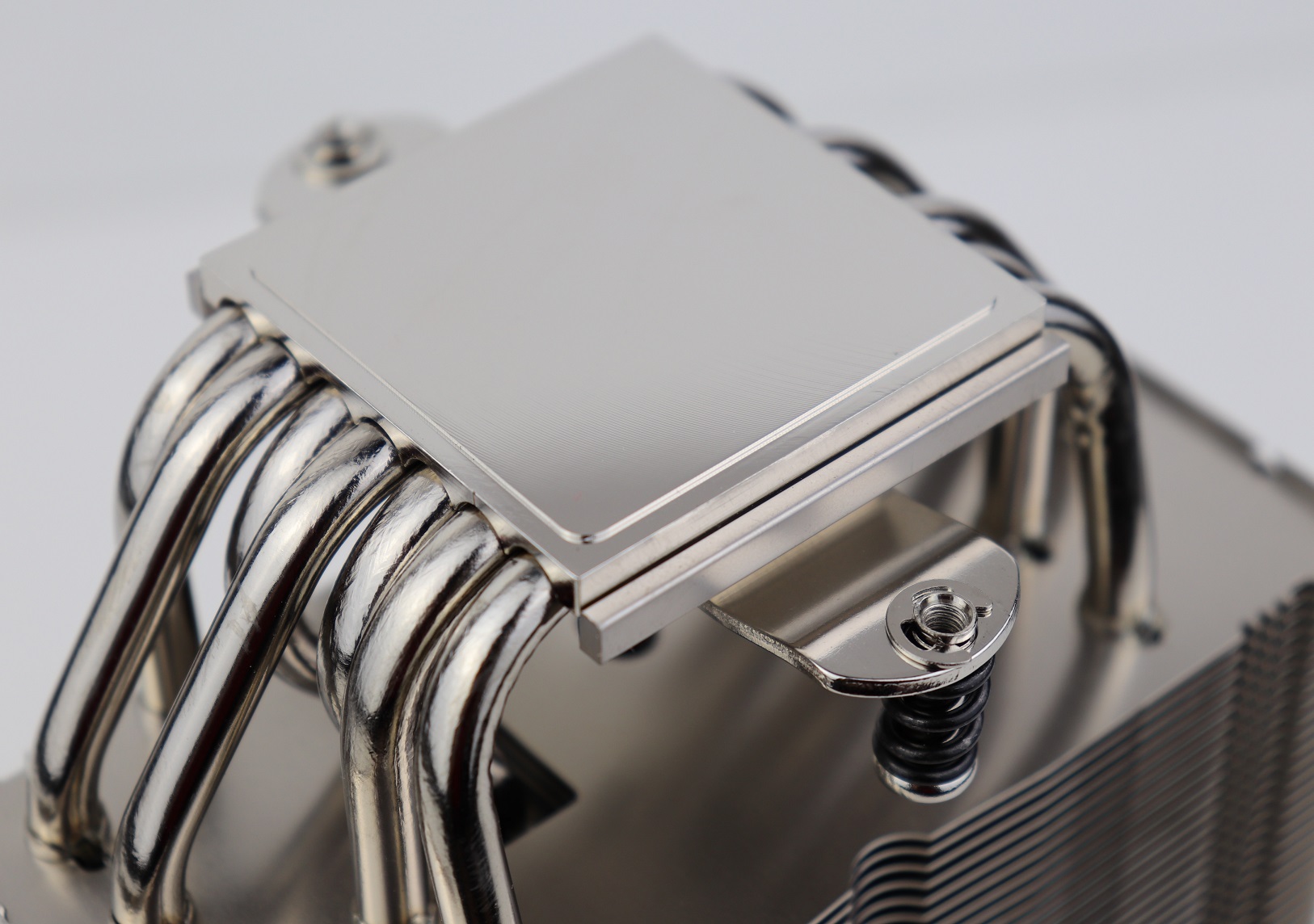
The copper CPU contact base is also nickel-plated and polished to a mirror-like finish. All seven heatpipes lie flat above the base without directly touching the CPU heat spreader.
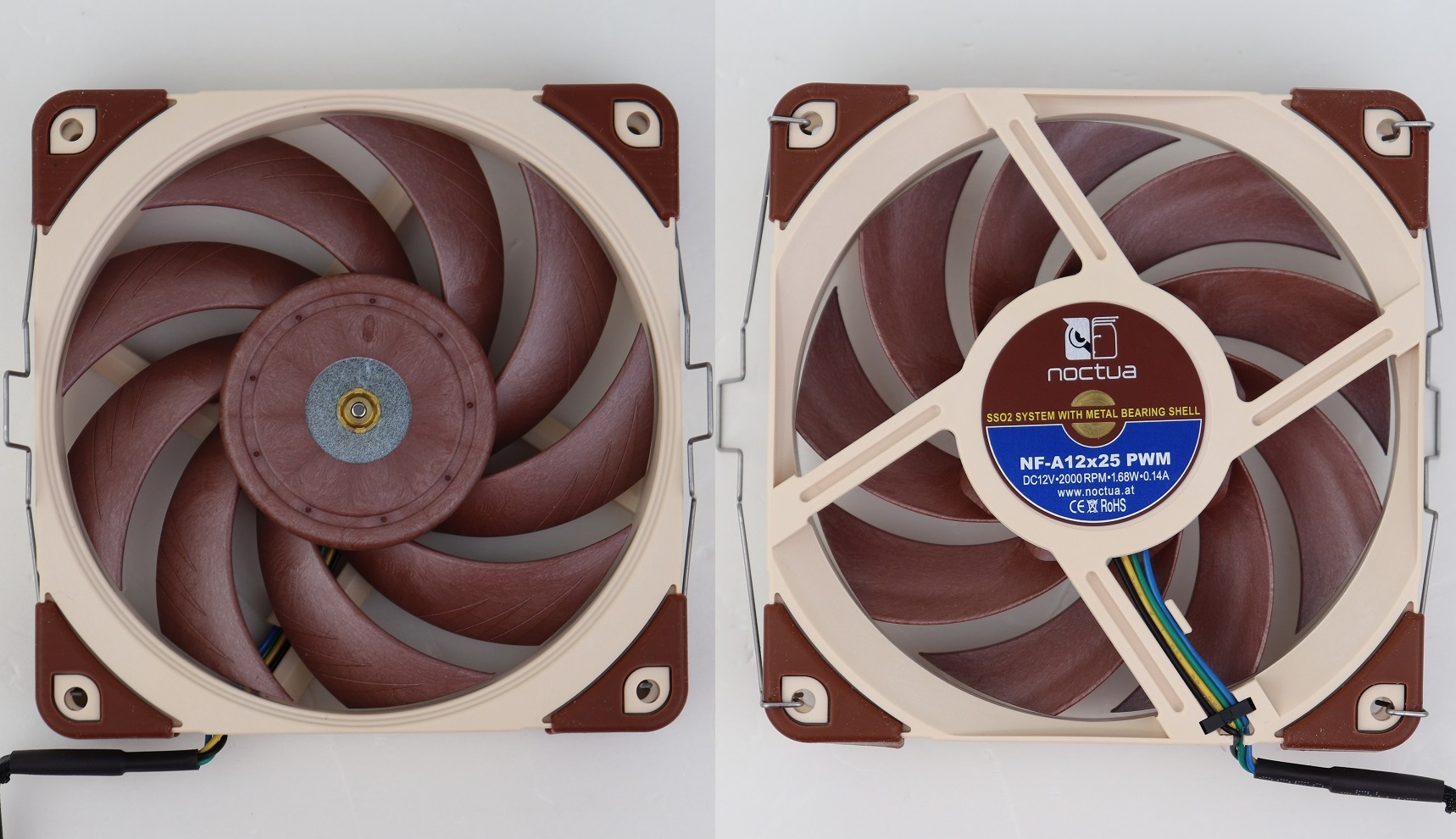
As mentioned above, the NH-U12A includes two latest premium NF-A12x25 PWM fans (its review here) out of the box. They will be installed as push-pull configuration on the cooler.
The NF-A12x25 fan can spin from 450 RPM up to 2000 RPM, which can be controlled via the 4-pin PWM header. The fan blades have an ultra tight tip tolerance against the frame, that can drastically improve efficiency and static pressure. All four corners on both sides have anti-vibration rubber pads to reduce unwanted rattling noises. The fan has a rated MTBF (Mean Time Between Failure) of over 150,000 hours.
Review
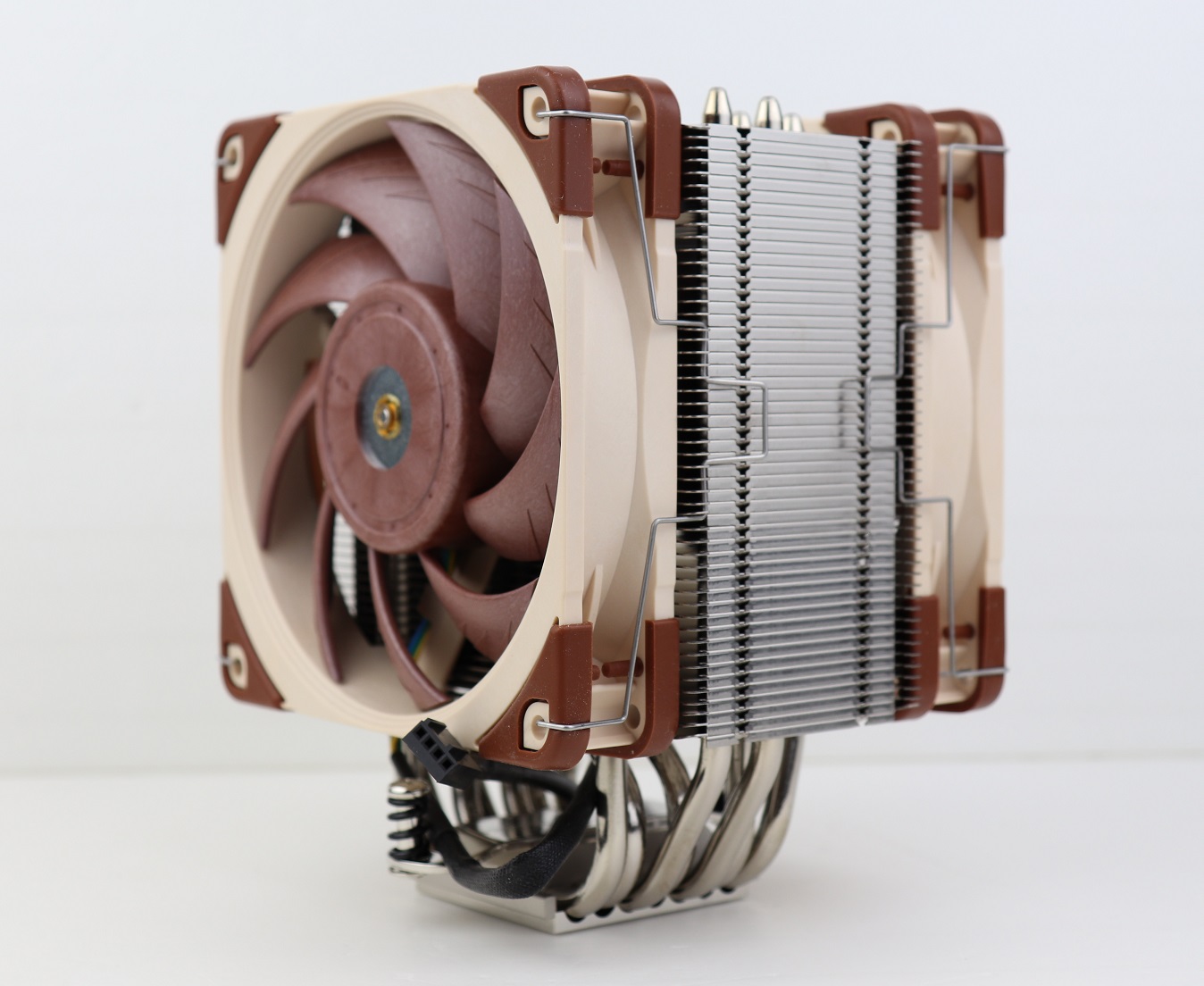
We have updated our CPU cooler tests to more reflect real-world cooling performance of coolers.
Testing Methodology
To find out how the cooler performs, a total of three benchmarks are included. AIDA64 is used to run a CPU stress test. CPU, FPU and system cache are all stressed to create as much heat output as possible. Also, Cinebench R15 and Cinebench R20 are used to simulate real-world CPU load (like video-editing or rendering). It will be run continuously for three times. The highest CPU package temperatures are recorded. Ambient temperature is around 26°C.
Results will be taken at a 50% fan speed and 100% speed, controlled via the motherboard CPU PWM fan header. Both single-fan and dual-fan configuration of the cooler will be tested.
- CPU: AMD Ryzen 5 1600X @ 3.6 GHz (95W TDP)
- Motherboard: MSI B350M GAMING PRO (its review here)
Performance
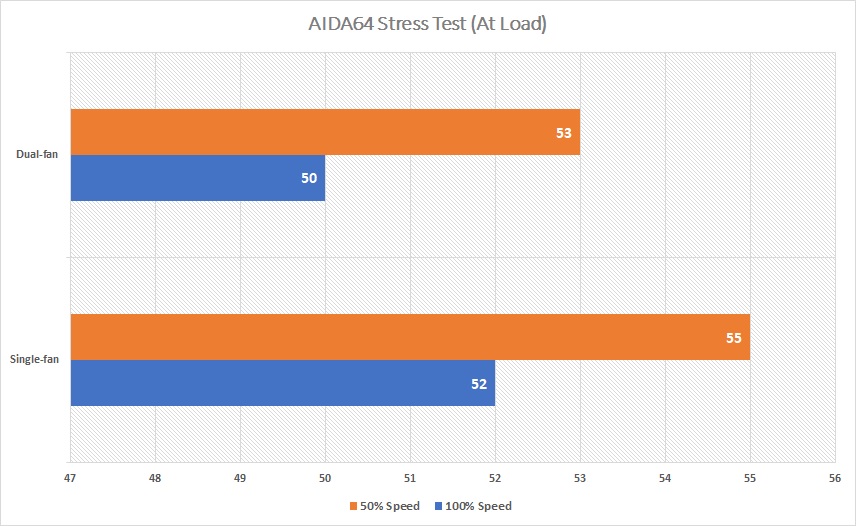
The idle CPU package temperature was fluctuating at around 28°C to 30°C. In AIDA64 stress test, the NH-U12A managed to keep it at a maximum temperature of 55°C, when using a single fan at around 1100 RPM. It dropped to 52°C, if the fan span at full speed at 2000 RPM, which was a 5.45% improvement. Using two fans, the temperature further decreased to 50°C.
Please be reminded that the NH-U12A already includes two NF-A12x25 fans by default. You do not need to purchase an additional fan.
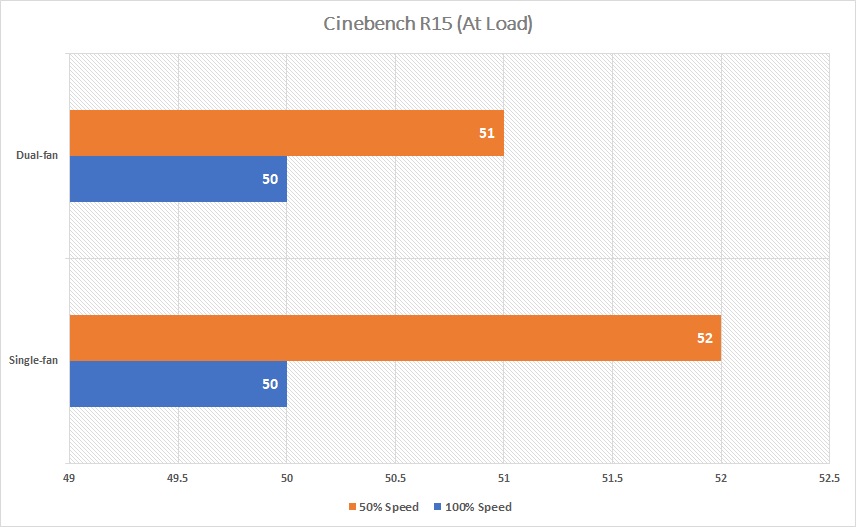
The processor hit 52°C at its highest point, running Cinebench R15. Pushing the fan to full speed resulted in a 2°C reduction, a 3.85% improvement. Maximum temperature reached 51°C when using the dual-fan configuration.
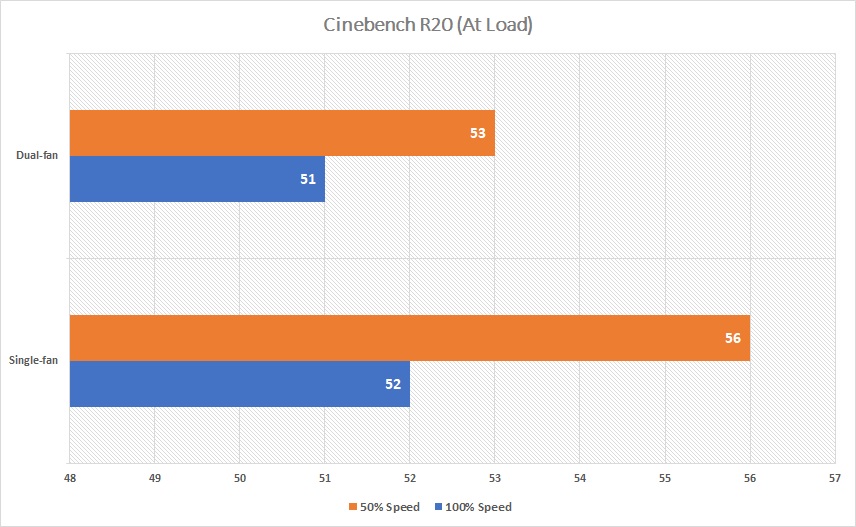
The differences between each configuration were larger at Cinebench R20, which requires higher rendering power. The NH-U12A maintained the temperature at 56°C or 52°C with one fan. The additional fan cut the temperature down to 53°C and 51°C.
Comparison
[visualizer id=”2873″]
Compared to other coolers we tested, the NH-U12A did exceptionally well as a 120 mm single-tower CPU cooler. It performed neck and neck with the Noctua NH-U14S (its review here), which had less than 1°C of differences in all tests. It surpassed the GELID Sirocco by around 1°C and the NH-U12S by 2°C to 3°C.
Conclusion

The Noctua NH-U12A performed remarkably for its size, which was on par with a 140 mm cooler, only behind by around 1°C. The larger heatsink, 7 heatpipes and the two top-of-the-line fans contribute to the improved efficiency and cooling performance. The cooler maintains enough clearance for the excellent RAM and PCIe slot compatibility. As always, installation is easy and quick with the SecuFirm 2 mounting system.
The NF-A12x25 fans operate smoothly and quietly at most RPM ranges. In push-pull configuration, the fans can be set to a lower speed to reduce noise, while still generate a significant amount of airflow.
The NH-U12A is backed by a 6-year warranty, with solid build quality. It is priced at $99.90 USD (MSRP), which seems like really expensive. However, you get two NF-A12x25 PWM fans inside and each of them costs $29.90 USD (MSRP). The price is not unreasonable, but Noctua has other cheaper and better options, such as the NH-U14S and NH-D15S (its review here). The main advantages of the NH-U12A is its compact size and outstanding RAM and case compatibility. Needless to say, the NH-U12A is one of the best 120 mm single-tower cooler in the market. If you have a greater budget, I would recommend you take a look at it before making the purchasing decision.
You can purchase the cooler from your local/online resellers or the links below from Amazon and Newegg.
- Amazon US: Noctua NH-U12A
- Newegg US: Noctua NH-U12A
Thanks Noctua for providing us the NH-U12A for review. (Review Sample)
Feel free to leave comments below, if you have any opinion about this website. Share the website around if you enjoy reading it. Subscribe to our Newsletter or follow our Twitter, Facebook and Instagram.
Support this website simply by shopping in Amazon and Newegg. It will give us small kickbacks, if you use the above affiliate links to make any purchases, which will help us grow.


